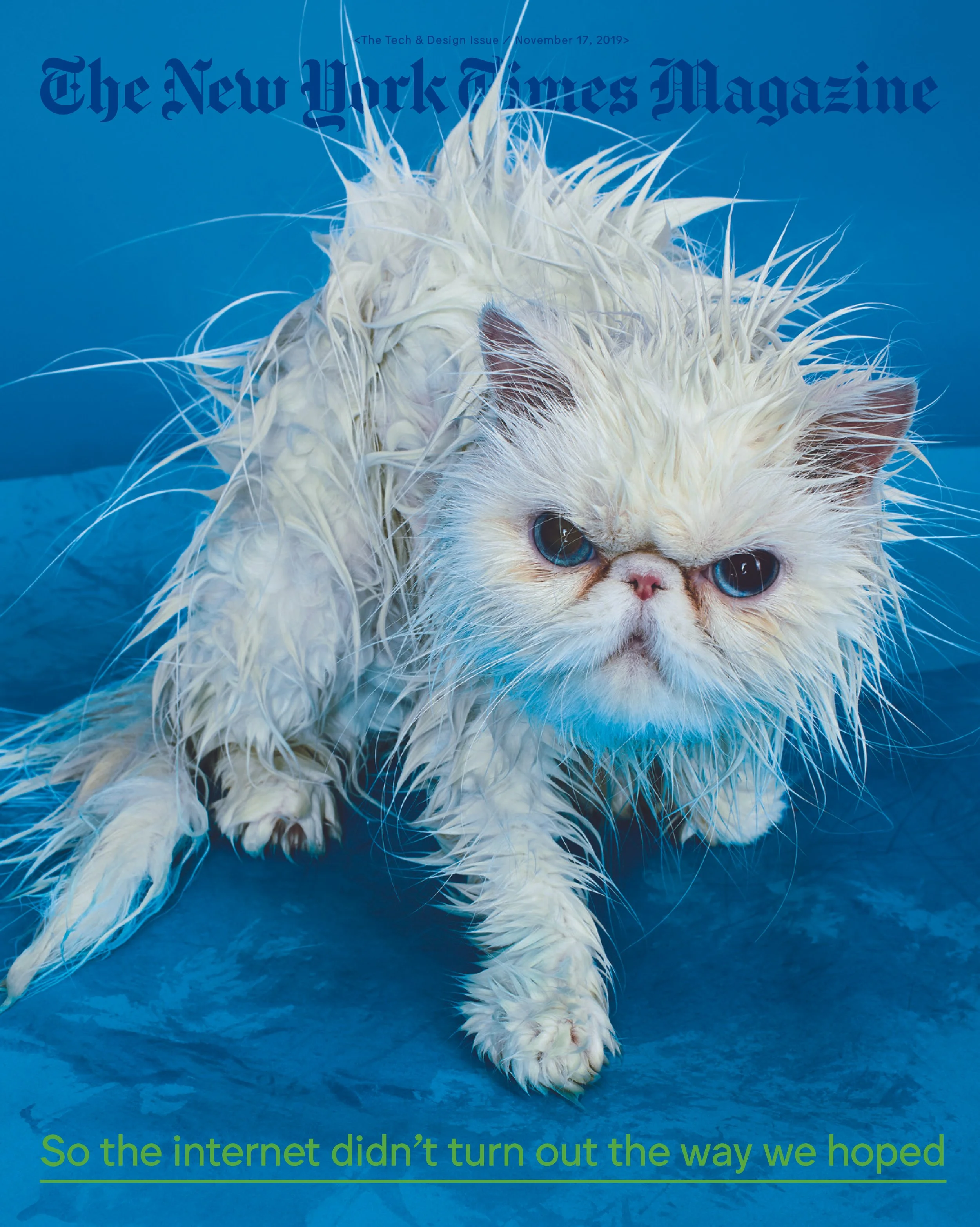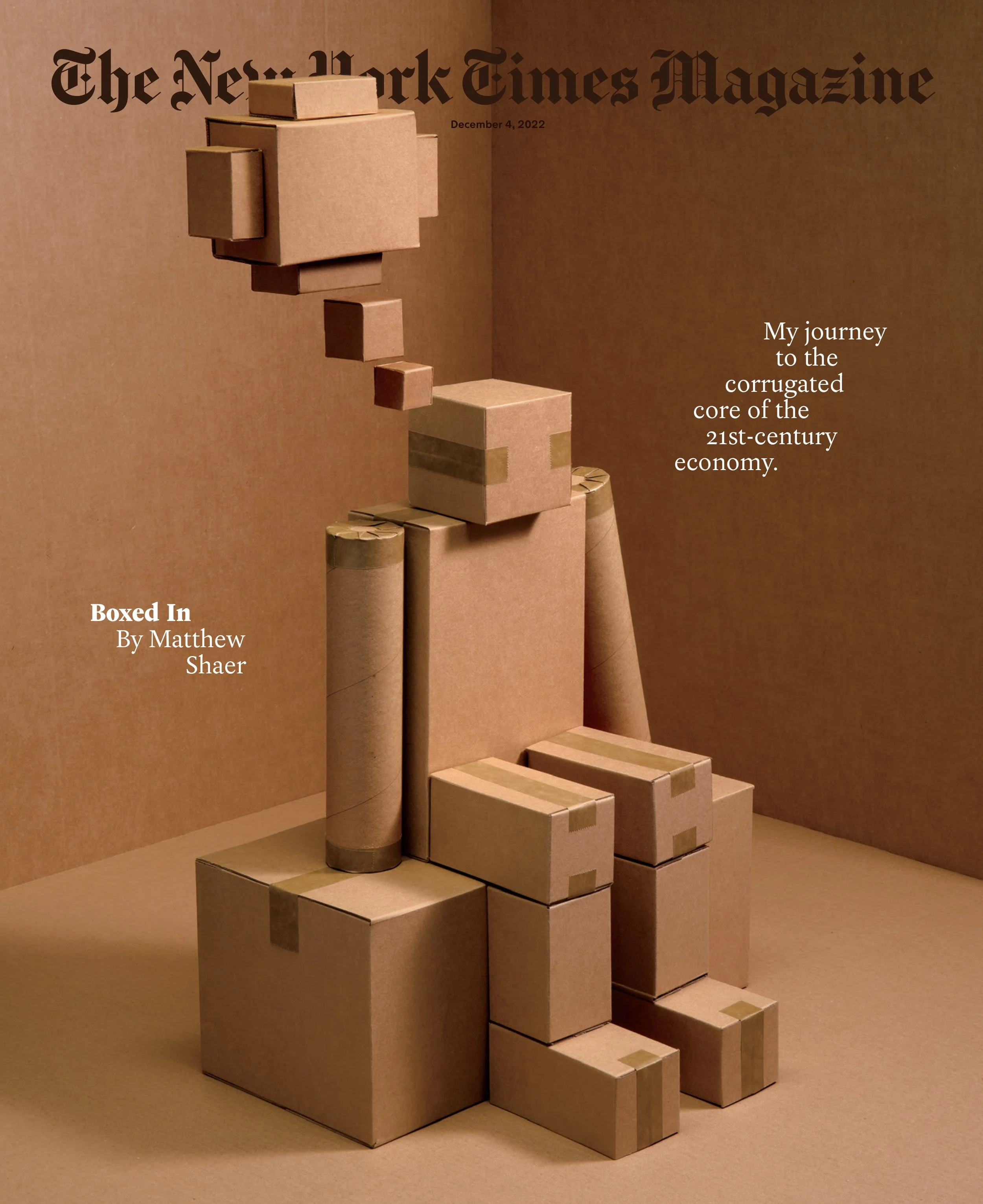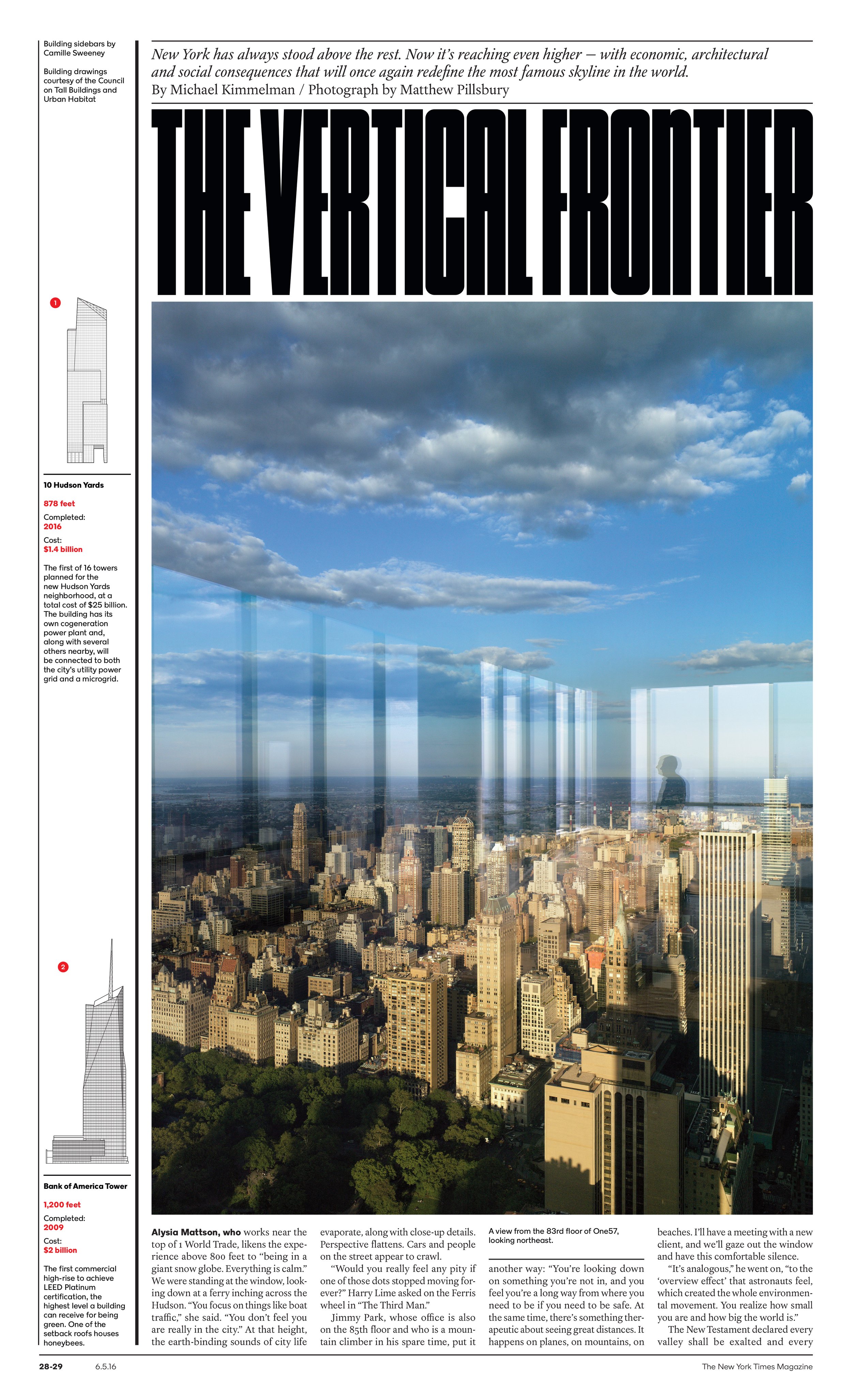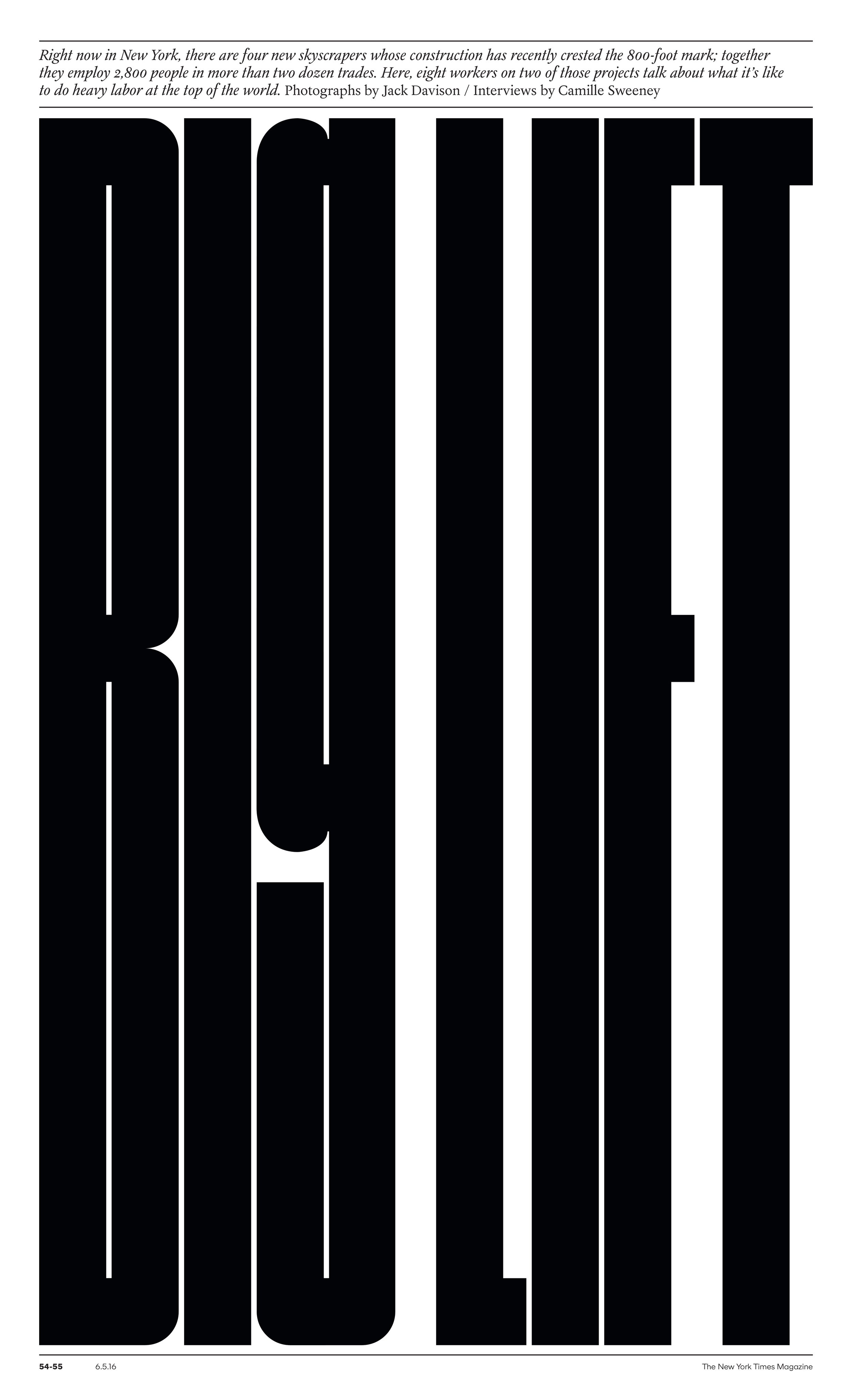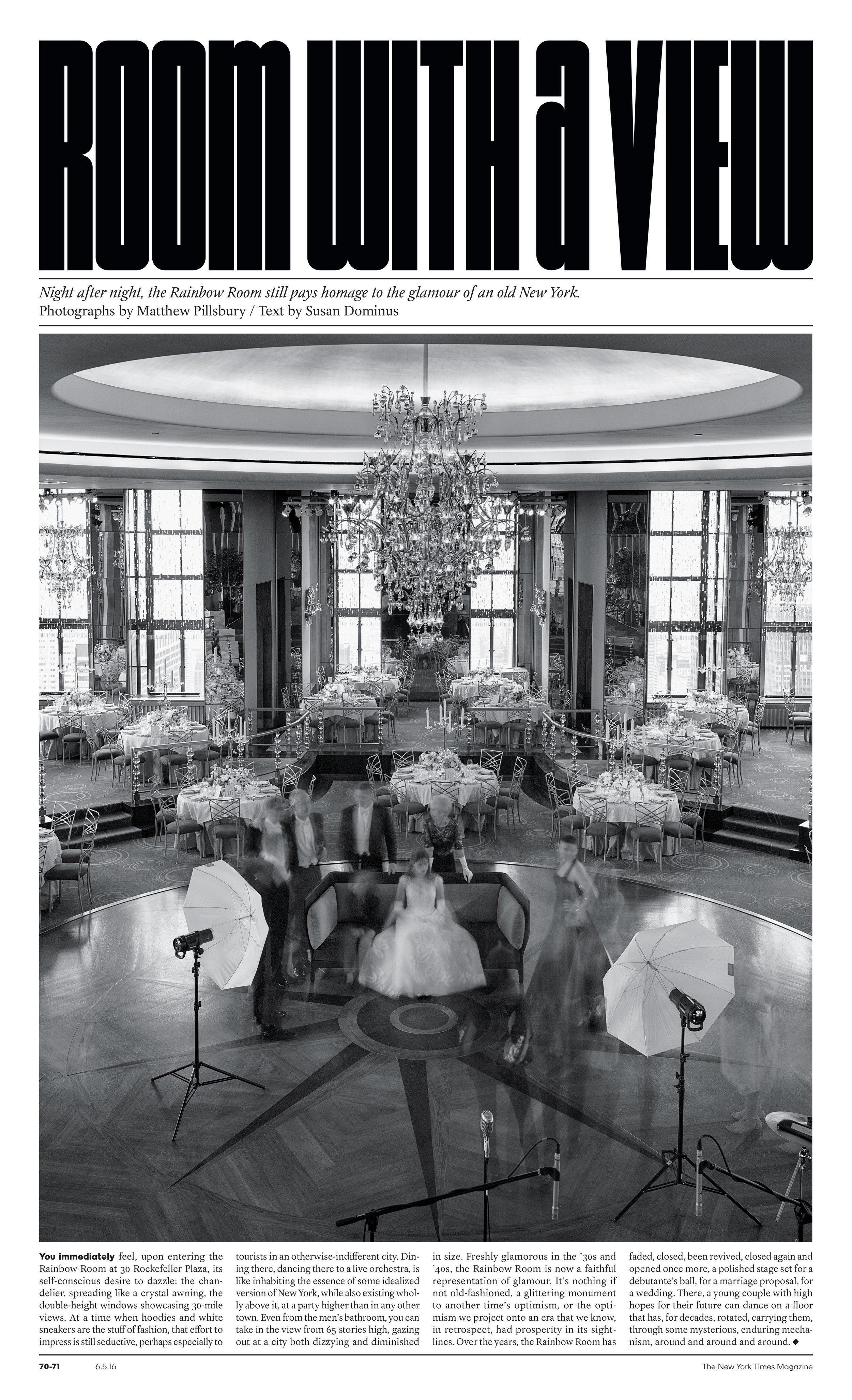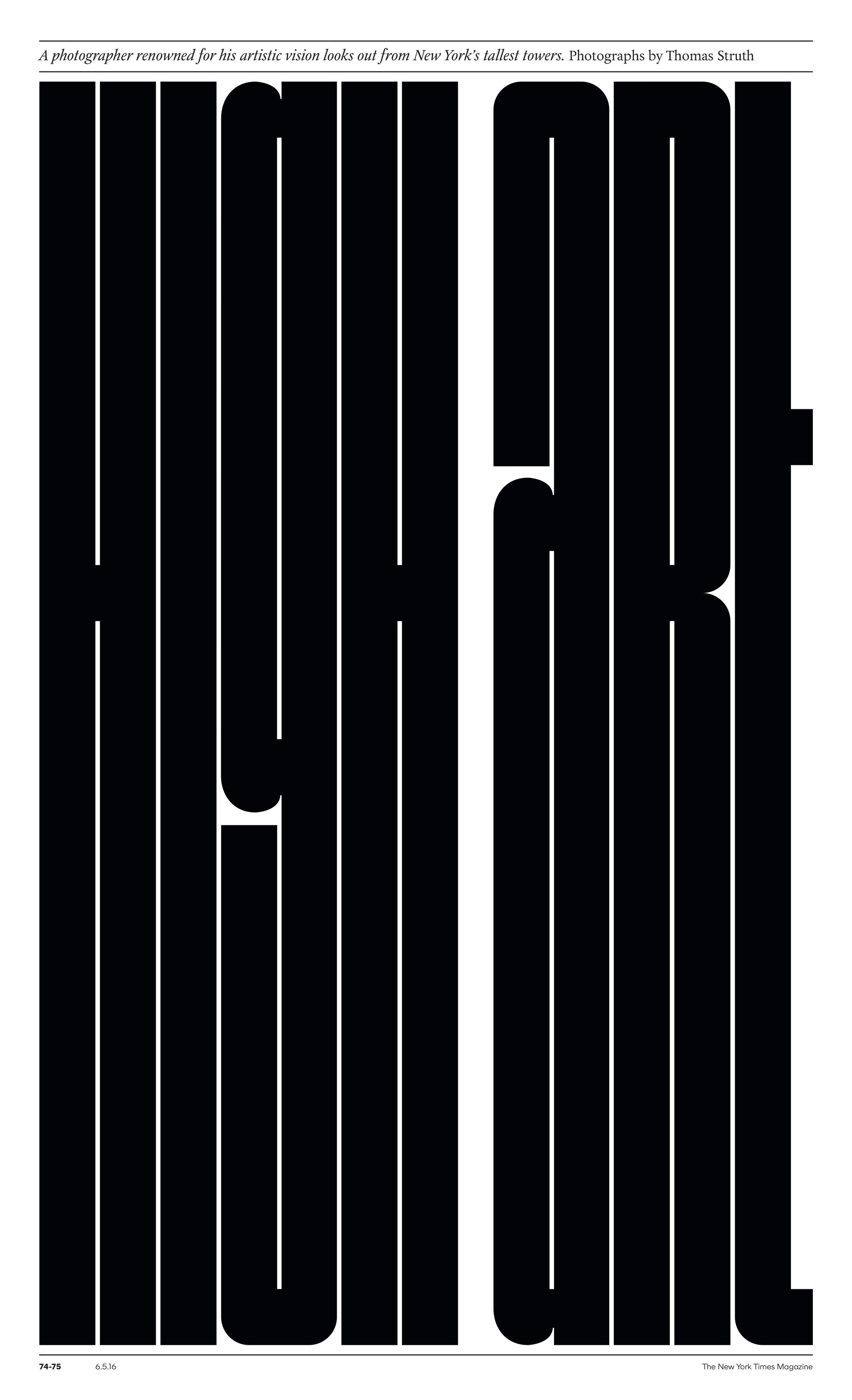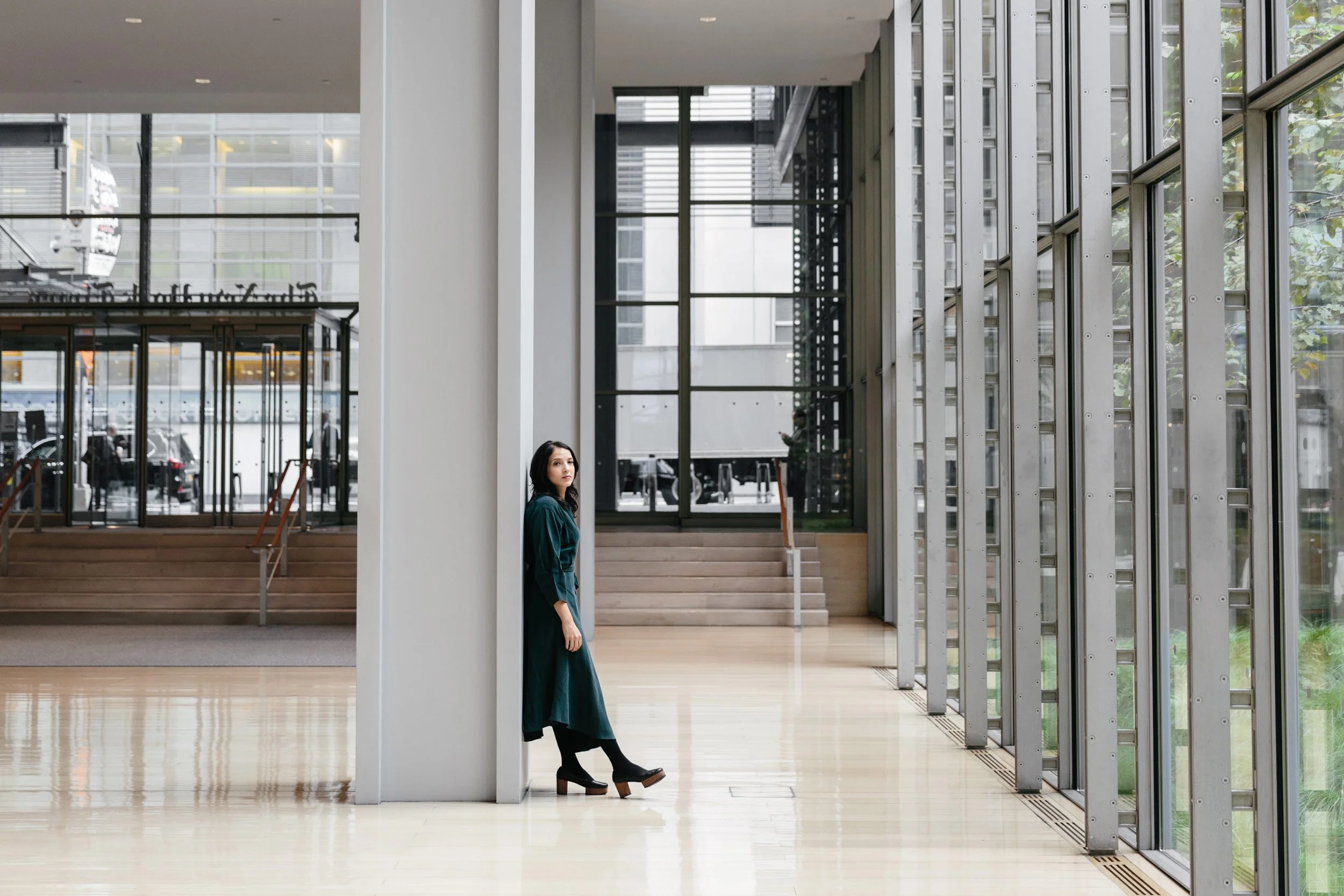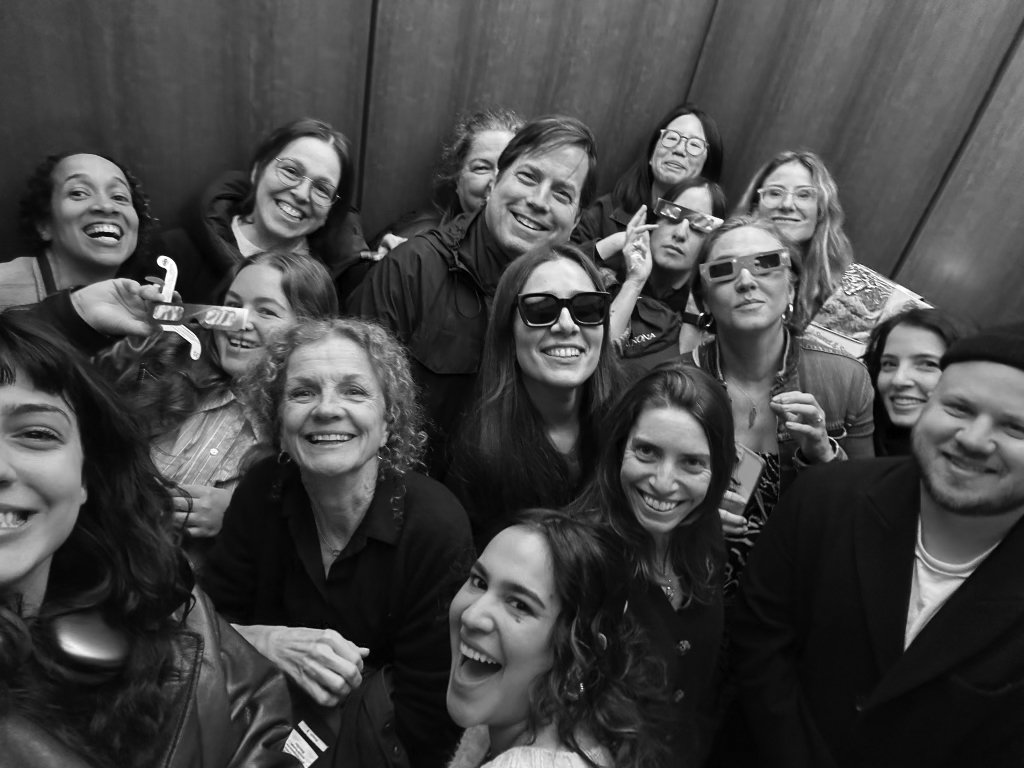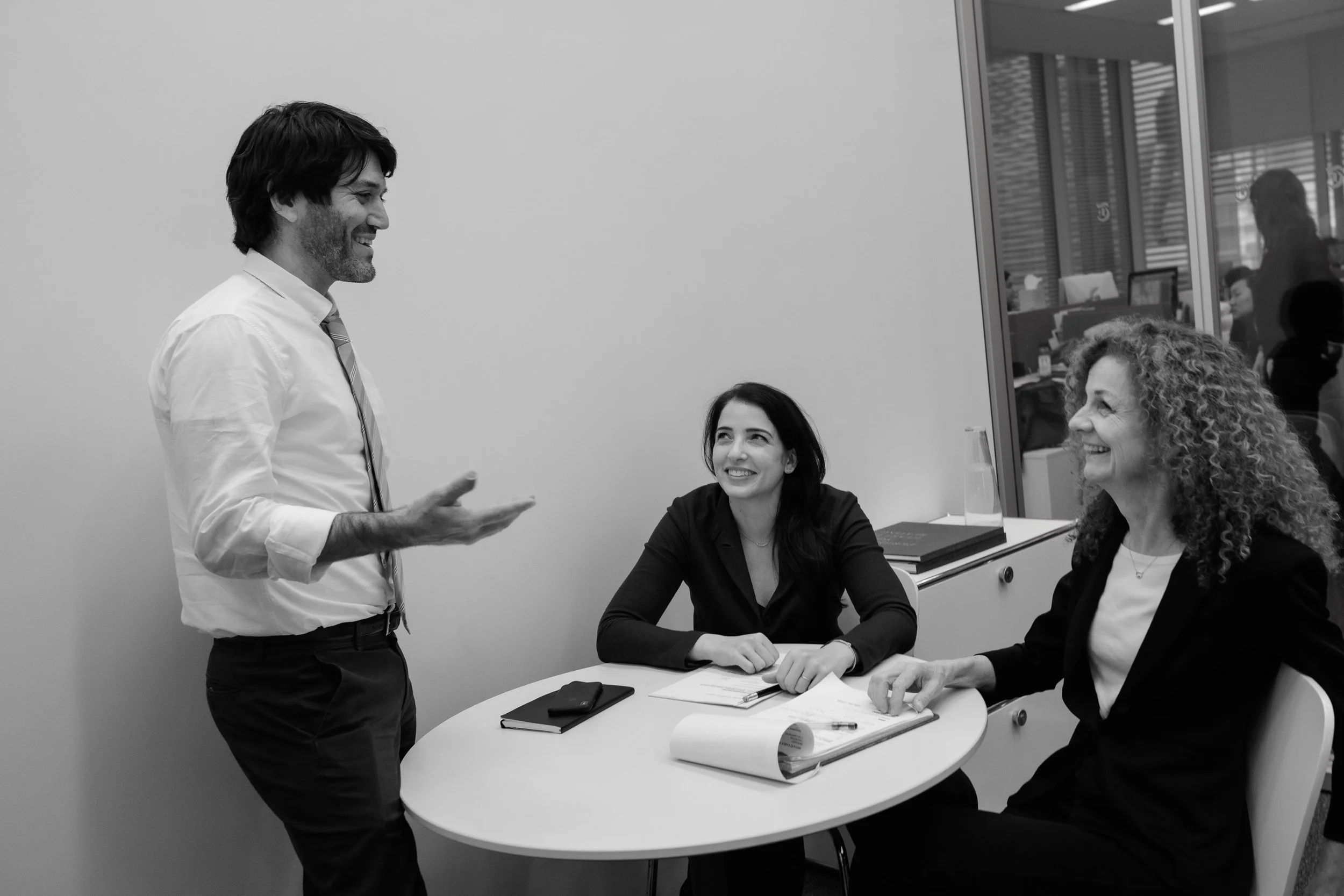The Fine Art of Magazine Making
A conversation with designer Gail Bichler (The New York Times Magazine).
—
THIS EPISODE IS MADE POSSIBLE BY OUR FRIENDS AT MOUNTAIN GAZETTE, COMMERCIAL TYPE, AND LANE PRESS
Photograph by Kathy Ryan
Imagine this: You’re a 42-year-old designer who’s only worked at one magazine. Ever. Then one day, unexpectedly, you’re tasked to lead the design of that magazine. Now imagine that the magazine is universally lauded as a design masterpiece. Add to that, your immediate predecessors have both been enshrined into every hall of fame across the design and media universe.
Heard enough? Well now throw into this mix that your job is only an interim post.
Why? Because just as your boss was leaving, his boss was out the door, too. That’s right, now you’ve got to navigate all of … this … while the company is searching for your new boss. And whatever you did that got you a shot at this opportunity the first time? You’re gonna have to do it all again. And likely for an editor who’s been tasked with coming in and shaking things up a bit.
“I’m fucked,” you might think. But you’re not Gail Bichler.
As you already know, Bichler survived the turmoil that started her tenure at The New York Times Magazine. And the astonishing thing—well, astonishing until you know more—is that Bichler has not only maintained the exalted design standards, she has pushed even further.
“Her magazine looks different from Rem [Duplessis]’s, as Rem’s did from mine. She’s pushed the envelope in dramatically new directions,” says her legendary predecessor—and the woman who discovered Bichler—Janet Froelich. Why? Because Bichler is an artist. And, as Froelich states, “she chooses to work with people who work the way artists work. She’s firmly committed to ideas and, most importantly, to journalism.”
“What elevates her as a leader is the discipline, structure, and consistency she brings,” says Arem Duplessis, whose departure for Apple created the opportunity for Bichler to move up. “Gail has always been so reverential to the Times’ legacy—and she fiercely protects that.”
“Tom Bodkin told me that I needed to get way more ‘elbows out.’ Which is something that I was completely not comfortable with, but I forced myself to do.”
Patrick Mitchell: I want to start with this quote that I read of yours, “My philosophy has always been to work as hard as I can.” Now, yeah, we all say that, but I believe that about you because I think the first time I met you was when we were both serving on the SPD board. And you had a reputation—you were already ‘somebody.’ And I noticed that you looked like someone who had a lot on their mind. And it reminded me of when I was probably the age you were at that time. I looked like that too. And my son Jack would come up to me and he’d catch me looking like you did in those meetings and he’d say, “Angry or focused?” And my heart sinks because you don’t want your kid worrying about that. So I would immediately just grab him and hug him, and say, “I’m never angry. I’m always focused. And I’m sorry about that.” But I wanted to ask you, going back to 2011—Angry or focused?
Gail Bichler: Definitely focused.
Patrick Mitchell: Good. What was your situation back then, at that time in your career? Where were you?
Gail Bichler: I was at the Times and I was the art director of the magazine, working under Rem Duplessis, who was design director.
Patrick Mitchell: And how many years later was it when you took over the whole thing?
Gail Bichler: Oh, gosh, that was 2011? I think it would have been about five years.
Patrick Mitchell: Okay. And did you have a kid at that time, or no?
Gail Bichler: Let’s see, 2011? Yes, I had a very young child. Which may have been part of the reason I looked the way I looked.
Patrick Mitchell: And also, not to mention, it was 8 o’clock in the morning, before work, when those meetings took place.
Gail Bichler: Yeah, that is a good point, too.
Patrick Mitchell: Yeah. We talked to your editor, Jake Silverstein, before and his name will come up periodically as we move on. And, just for the listeners, everybody should know at this point that you’re one of the great magazine designers working right now. Our hats are off to you.
Jake told us that you are as much a digital visionary as we know you are in print, that you have really embraced this digital end of your job. And I just wondered if you could talk a little bit about what drives you, what excites you about it and we’ll go from there.
Gail Bichler: Sure. Yes I really am excited about the digital space. And I also really love print and always will. And I recognize that, once you move from print to digital, you do lose things. You lose that opener moment, the poster that we all love, the typographic moment, because there really isn’t a way to have something that’s equivalent to that on your phone.
But you also do gain things. You gain a lot of storytelling tools that I think are really interesting, like audio and video. You gain the ability to walk somebody through things in an interactive way. As someone who is interested in storytelling, I think there’s a huge amount of potential in it. Just in the way that a story unfolds, in the way that you can immerse someone in the story that you’re telling.
And I think also one of the things that attracts me to it is that images and text relate to each other differently on the phone. A lot of times the text really has to relate very closely to the images. There’s an opportunity to have many more images. And because you’re able to tell a visual story a lot of times. That’s a moment where designers can really affect the narrative.
For example, a lot of times when you’re working on a magazine, sometimes it’s collaborative the way that you come up with stories, but sometimes it’s also a matter of someone giving you a story and maybe giving you some art as well, or you’ve been part of that process. But you are trying to kind of figure out how to tell that story best with what you’ve got.
But in the digital space, a lot of times now our editors are coming to us with ideas for topics or, kind of, more loose ideas about a story that they could tell, and they’re really asking us to help shape that, and show them ways that they can tell different stories. And I think that’s really exciting.
And as somebody who’s been doing this for a long time now, I also am excited about the idea that it is a constantly shifting space. And every time you learn something it changes. So you have to kind of constantly adapt and change. And I think that’s something that I’m interested in as well. Just new formats and all that comes with that.
Karen Frank: Can you talk about a few of the digital experiences that you’ve made that you feel proudest of, maybe how they play off of what was done in print or vice versa?
Gail Bichler: One of the things that comes to mind was this audio Voyages issue that we made. I think it was 2019. And the Voyages issue is something that we do a couple times a year. It’s not very service-y. It’s about taking readers to places that they maybe wouldn’t be able to go to or taking them on interesting journeys. And they’re often a text-based story or more recently, we do a lot of very visual journeys.
One year we decided to make that an audio issue. And that was about taking people to places where the sounds were interesting. And also, hopefully, the visuals were interesting. We really had this question at that point about what the print version of this would be, because obviously the best version of this was to be listening to the audio.
So at some point, Jake was suggesting that maybe we publish one piece of writing that was somewhat substantial. And then imagery that you could look at while you were listening to the audio and also possibly deep captions that went with that. And I think his thinking was that he wanted you, if you got the magazine, to be able to have an experience with the magazine that was its own experience in case you didn’t want to go listen to the tracks that went with the pictures.
And we in the art department decided that we really wanted to force people to go have the experience we wanted them to have. We pitched this idea of just running one, I think we actually tried to get almost all the text out of there, but ended up getting through the idea that we’re going to run one spread of text that explains the project and tells you to go online to hear the audio. And then the rest of the magazine was just full-bleed images with numbers on the pictures. And of course you can have an experience with that too, just looking through these pictures.
But in order to really get a lot of meaning out of it, you would really have to go online. That was something I think that I was really proud of. I thought the format online was really interesting. It was a little bit podcast-like, but it also had visuals and it kind of moved you through the experience. And it was just a huge effort on everyone’s part. And then we also did an event that related to it. And that was a lot of fun too. So it was actually in a lot of different formats.
Patrick Mitchell: Interesting. So it’s like a museum audio tour.
Gail Bichler: Yeah, a lot like that actually. It’s a good description of it. Another project that I was really proud of was something that we did pretty recently. It was part of our Future of Work issue. It was about the 24-hour workday, and flexibility that people now have in their schedules, and looking at what that looks like.
And that was a really interesting format where we got people to video themselves throughout the day, and when you came to the site, depending on what time of day you arrived, that’s the moment you were shown in the lives of these six different people.
And it was just like using the video, and telling a story that way, and working with people to figure out a system to get them to shoot that was something that I thought was really interesting. That was done by Kate LaRue, our digital art director. And I thought it was a really unique and interesting way to make a story.
Weekly magazines tend to add up. How many issues has Bichler produced? “It’s probably close to a thousand. Probably 500 as the design director.”
“Sometimes you don’t necessarily know what the cover is going to be three days before it ships.”
Karen Frank: So Gail, can you briefly walk us through your career timeline at The New York Times? You know how you first got your foot in the door and the steps you took to get where you are today?
Gail Bichler: Yes. So I moved to New York in 2004. I had been working in Minneapolis. But my husband got a job opportunity in New York. So we came here for that. I was really excited about it because I had always wanted to live in New York. But I did not have a job lined up. So I had to find something to do. And in Minneapolis, I had been working by myself and I really did not like that. So one thing that I knew was that I just wanted to work with other people.
And I probably wanted to work in an institution or a studio that had work that I could get behind or a mission that I really was interested in. And The New York Times Magazine was on my list of places to get in touch with. And so I contacted Janet Froelich, who was the creative director at the time. She was the creative director of T actually, but also over the Sunday magazine in a more removed way.
So I sent her an email and it had a PDF of my three best book projects in it. Most of my experience leading up to this was in small studios and I really specialized in book design. I did do a lot of other things. I had done some signage, and some identities, and websites, and things like that. But primarily books.
So I sent Janet my three best book projects in a PDF and I managed to get an interview with her and she gave me an opportunity to come in and work at T for three weeks. Which was super exciting for me, but also really scary because I had never made a magazine before. And I really didn’t have any idea what was involved in it.
So I got there and I learned on the job. I tried to absorb everything I could. And I did a good enough job that she extended my time there. And I had this great opportunity to learn from her and learn from the team there. And I worked there for about eight months. And during one of the breaks in production, Rem hired me to work on the Sunday magazine for a bit.
And I really found that I just loved it. I loved these kinds of stories. I loved the way they were using typography. I loved his approach, and being able to commission art, and all of those things. And eventually Rem did hire me and brought me onto staff. And I really loved working for Rem. Also, he was this great creative force.
But he was also just really funny. He had a great sense of humor and the Times was a pretty stressful place to work. So just having somebody who kind of broke that tension was really great. And I worked with him for about 10 years. So he was really my mentor and taught me a lot of what I know about magazines.
And then in 2014, he left and went to Apple. And at the same time, the editor of the magazine, Hugo Lindgren, also left. It was a kind of transitional moment. So he left around the same time. And at that point, everything was kind of uncertain. We didn’t have an editor-in-chief. We didn’t have a design director.
And Tom Bodkin, who was the CCO of the Times, asked me to step in and temporarily take Rem’s role. And they were going to look for a new editor-in-chief, and at that point, once they got the editor-in-chief, he was going to decide who the new design director was. And one thing I didn’t mention also is that our deputy art director had also left and gone to Wired a couple of months earlier, and that was Caleb Bennett.
So basically the two spots below me were not filled and I did not have the ability to put anyone in them. And I did have some really amazing designers on my team. Like Ben Grandgenett, who is now the magazine’s design director. At that point though, he was pretty much just out of school.
And I had a couple other people who were great: Jason Sfetko and Raul Aguila. They also were kind of earlier-on in their careers. But I hired a couple freelancers and we put out the magazine that way for like six months. And it was pretty grueling because it wasn’t the way that you tend to make your best work. We didn’t have certainty about what would happen.
And then ultimately they did hire Jake. And he came in and he was pretty amazing. Like we were all very excited about him. And I told him that I was interested in the design director spot, gave him my pitch and then he told me that he was going to consider me, but he was also going to consider other people. And that’s something I expected. That’s a really important role at a magazine.
Patrick Mitchell: But how did it feel in the moment?
Gail Bichler: It felt bad! That’s not how I wanted that to go. I was upset about it, of course. But I think I was an underdog for that position for sure, because, you know, a new editor comes in and they want to make their own mark. And it’s probably not the person that’s been working there for 10 years that’s going to help them change the place.
And he could see the work I had done for the past six months. Which, as I said, it was hard. I didn’t think it was my best. I don’t think it spoke to my potential necessarily. And so I knew it was going to be hard to get the job but I had this time to work with him while he was looking. And I really started to kind of try and pull myself up and make better work.
And one thing I also had to do was really change the way I interacted with people. I had this conversation with Tom Bodkin and he told me that I needed to get way more “elbows out.” Which is something that I was completely not comfortable with, but I forced myself to do.
I think as someone who played a supporting role for a long time, I wasn’t that used to speaking up so much. But I made that change and I haven’t gone back. I made that change and I was able to impress Jake. And he hired me as the design director.
Patrick Mitchell: So now walk us through a typical day. What’s a typical Wednesday in your life like?
Gail Bichler: It’s a lot of meetings. Everything we make is collaborative and we have a lot of balls in the air all at once. On any given day I have a ton of different kinds of meetings. I meet with people about upcoming stories. I meet with Kathy Ryan, our photo director, and her team because we collaborate closely with them. Sometimes we meet with artists. I meet with designers to look at their work. Sometimes we meet to present work.
Patrick Mitchell: Most importantly, what’s for lunch?
Gail Bichler: Whatever I can get in between the meetings. And preferably not the cafeteria because since I have been there for close to 20 years, I really just can’t do that anymore.
Patrick Mitchell: What was that place in the lobby that sold sloppy joes? Is that place still there?
Gail Bichler: Schnipper’s? Is that right? Yes. Still there. I don’t tend to go there. I usually eat salad.
Patrick Mitchell: Good call. So we’re talking about living in a weekly—do days go by without you opening InDesign?

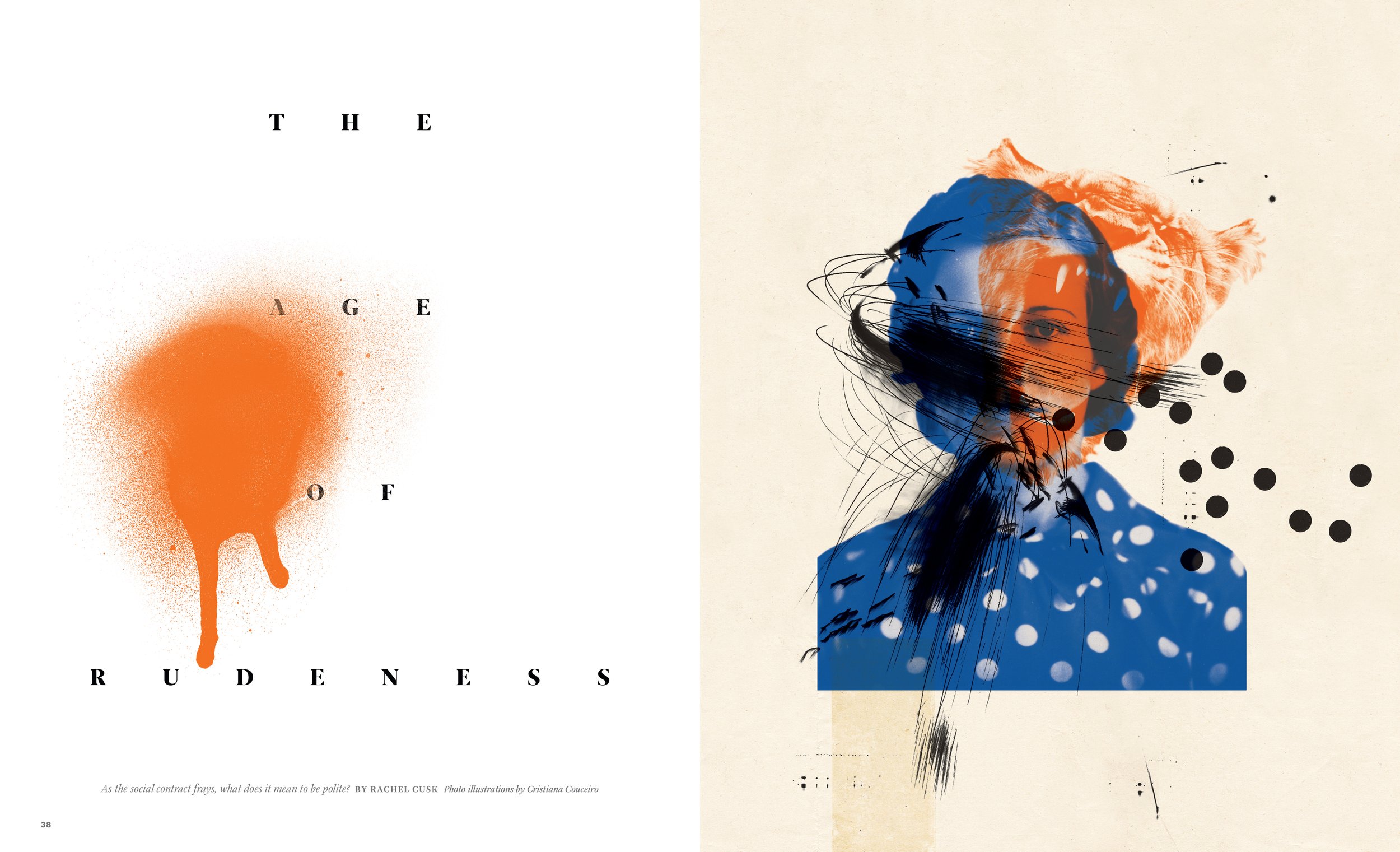



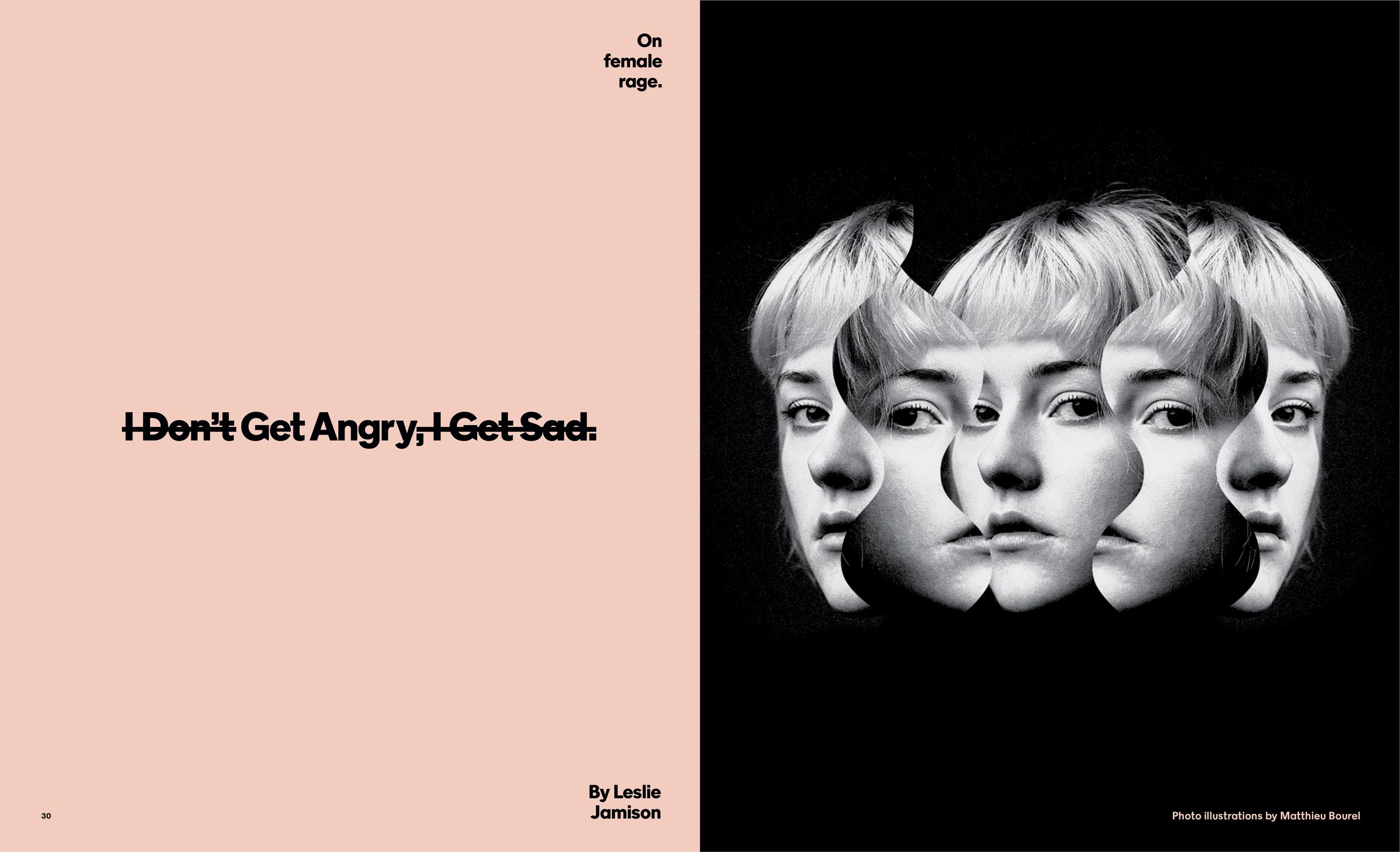


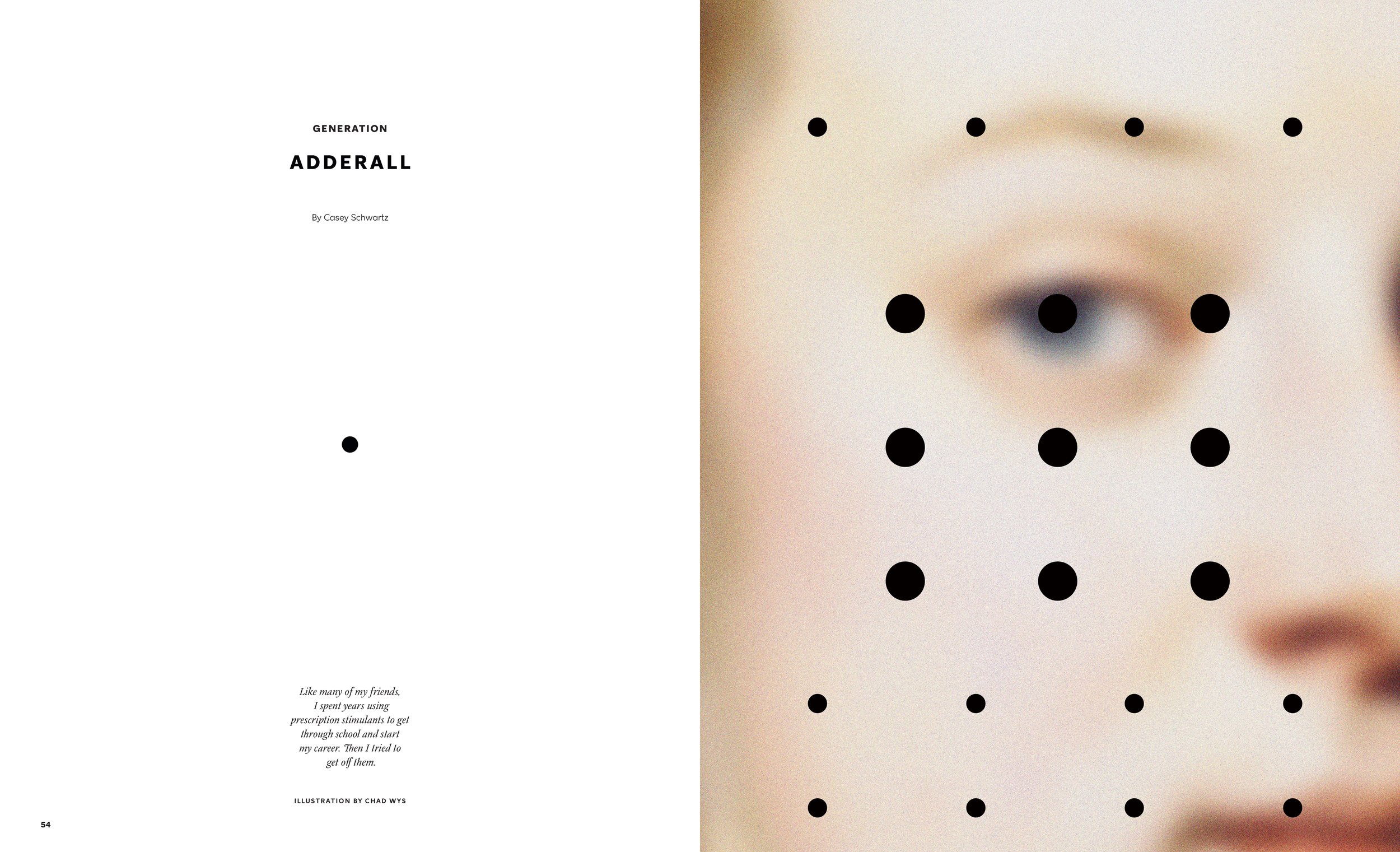

“Once you move from print to digital, you do lose things. You lose that opener moment—the poster that we all love—the typographic moment. There really just isn’t an equivalent to that on your phone.”
Gail Bichler: Yes, definitely. Yeah. I still make some covers. I still really like to do that occasionally. And also, because we make a lot more stuff—we do our own digital design and we also are making this print magazine—because we do those things and we still have close to the same number of staff members as we did when we just made the print magazine, sometimes it’s actually a necessity for me to design the cover. But when I do those things, I really end up mostly having to do them at night, because that’s the only uninterrupted time that I have.
Patrick Mitchell: That weekly life is—I’ve done two Sunday magazines in my life. I have this quote from Kurt Andersen. This was in regard to Tina Brown going from Vanity Fair to The New Yorker to do a weekly, he said, “Even a brilliant person has only so many ways to do a weekly. The second 300 issues are probably going to be less original, and surprising, and interesting to the world, and yourself than the first 300.” How many issues are we up to for you?
Gail Bichler: It’s probably close to a thousand. Probably 500 as the design director.
Patrick Mitchell: Have you—I don’t want to say you repeated yourself. You’re too ethical for that, but have you borrowed from your inventory periodically?
Gail Bichler: Yeah. I mean, we really try not to do that. But you know, I think it’s inevitable that you do that. Sometimes you have to fall back on something that you’ve done. But I would say that one thing that kind of helps in that case is that our work is in response to content and that content is incredibly varied, and requires us to take a lot of really different approaches.
And so that is helpful, both in terms of remaining interested in what you’re making and learning things and also just being able to do something original and different. And also, in terms of that quote, it’s not one brilliant person making this magazine. It’s a whole team of people that all have different interests and talents and also collaborators that work with us and bring those things to the table as well.
That also really helps in terms of making something original. But we do look back at things sometimes and say, “Oh, yeah, that looks like this other thing we made.” Or is somewhat similar to this other thing because we deal with a lot of the same topics.
Patrick Mitchell: It’s a firehose of content. Is someone going to remember the drip that came out of the hose 12 weeks ago? I don’t think so.
Gail Bichler: Okay. That is so accurate. The number of times that I’ve thought to myself, Yeah, that looks like this other thing we made. But I’m the only person that’s going to remember that.
Karen Frank: So needless to say the cadence of doing a weekly is, I don't know, exhilarating. But you’ve talked about how it frees you creatively and the importance of taking risks in order to do something great versus just good. But how do you weigh that risk with the tight turnarounds that you’re facing every week?
Gail Bichler: I mean, that turnaround is always part of the calculation in a weekly. And we take risks where we can. We really kind of calculate What are the opportunities in terms of the story? What’s the timeframe? But generally when we have a really good idea—everyone there is very ambitious. So we really try and make it happen.
And sometimes, because of the tight time frame, sometimes that means that you don’t necessarily know what the cover is going to be three days before it ships and there’s a lot of stress involved in that. So I had learned to live with that stress.
And sometimes the way that I do that is by going down a couple of paths at once. Or coming up with some kind of backup plan. Or just realizing that it may not be exactly what I had planned or hoped, but it will be something pretty good—or not—and we’ll still publish it.
Patrick Mitchell: Jake said we should talk to you about your Rand Paul cover. It seems like it was a real turning point for you.
This 2014 cover was a turning point for Bichler
Gail Bichler: That was definitely a turning point in our relationship. That was back when I was still the art director and trying to get my current job. And we were publishing a story on Rand Paul, and it was about whether or not he would make a presidential run, and whether or not he would capture the youth vote.
And I had proposed a kind of traditional conceptual idea, and we had shot that and were proceeding with it. But I could tell he wasn’t really excited about it. I wasn’t super excited about it. I mean, it was executed well. It was really only me to blame because it was my idea. But about three days before it shipped I went and proposed that we change it to an eighties punk band flier, basically. And we hired Matt Dorfman to make it. And Jake loved that idea and he rewrote the copy to go with it.
And it just was much more interesting and fun. One of the details I remember that I loved was that Matt had taken out one of the A’s in the masthead and replaced it with an anarchy logo. And it just represented a different way of working for us, a way of collaborating that I think showed him that I could do the job.
Karen Frank: Can you give us another example of a cover or a package that you were surprised was chosen? I mean, you say you go down several paths every week. So just curious to know what other dark horses or surprises there have been in your mind?
Gail Bichler: I think at this point we’re usually on the same page, both Jake and I, and also Kathy. But sometimes we actually have to work pretty hard to push something through. And one time that we did that was when we published our New York issue that was about life above 800 feet.
And Matt Willey, who was the art director at the time, had this idea of turning the magazine on its side so that we can make use of the tall dimension of the magazine to showcase the buildings and speak to that format. And we proposed that idea in a meeting and Jake wasn’t super interested in it.
But we were so excited about it that we went back and made a mock up of it to really show the potential of it and show that it would be a showcase for this great photography in a different format and what it could look like. And then he did get really excited about it. And so did Kathy. And then he was kind of all-in on it.
And one thing that we really wanted to do was to make sure that it was a good reading experience, even though it was turned. So we wanted all the ads to be in the same orientation as the rest of the magazine. So he actually helped by going to all of our advertisers—our ad sales team had to go back to all of our advertisers and ask them to redesign their ads in the other format.
Patrick Mitchell: I’d never heard this part of that story. That’s incredible.
Gail Bichler: Yeah. That’s actually what I think was surprising. I wasn’t sure that we could do that, but I think it really helped to have the mock ups. Matt ended up making a ton of mock ups. And I think they were distributed and our ad sales team went out and just sold it. And it worked.
Patrick Mitchell: Think about that in terms of where the magazine business was at that time, how little enthusiasm you would have guessed there would have been for anything interesting or new. That’s a huge thing.
Gail Bichler: Yeah, that was a big deal. I mean, like I said, I was also surprised that we managed to pull that off.
Karen Frank: Have you had to do mock ups since then to convince anyone?
Gail Bichler: Yes. We tend to do a lot of mock ups in various formats. We talked a little bit about the digital part of this and we are constantly making mock ups of what things could be in that space. But also a lot of times we’ll make a mock up of something or lay something out to kind of convince Jake that we should have more space for it, which is something that Kathy is also usually kind of pushing for.
So sometimes we’ll have tried to get more space for a visual project and not been successful. And so we’ll go lay it out and we’ll lay it out both in the format that it would have to take if we kept the same page count and in the format that we want it to take. And then we try the approach of you can have this or you can have this and hope that he’ll pick the extended version. And that works a lot.
Sometimes things go sideways—and it’s a good thing. For a 2016 special issue about life above 800 feet, “Matt Willey had this idea of turning the magazine on its side so that we can make use of the tall dimension of the magazine to showcase the buildings and speak to that format.“
Karen Frank: I know I’ve worked with a lot of different editors and some are extremely visual and seeing that can make all the difference. Would you characterize Jake as one of those visual editors?
Gail Bichler: Yes. He definitely is. But I would also say to his credit he will sign on to an idea that he just thinks is a good idea and has potential, too. He’s pretty good at imagining what something could be.
Karen Frank: Okay. So we’ve already established you’ve been doing this for weeks on end. So this might be a hard one, but I’m wondering if there’s a cover that you’re the proudest of having made since you’ve been there? And conversely, is there a cover that still haunts you?
Gail Bichler: So you’re right. It’s really hard to pick a cover out of all the stuff that I’ve worked on. But I would say that, there’s certain kinds of covers that I find really enjoyable to make. And those are usually covers where you’re visualizing something that’s pretty hard to visualize.
An example of that is politics. We used to not do a lot of politics stories. In the Trump era we’ve done a ton of politics stories. But every time a political story would come up, I would just brace myself trying to figure out how we can come up with a new visual that is unique for that kind of a story.
But one example that I feel like was successful was this cover on the future of the Democratic Party and basically how they had no plan. This was, like, a little bit into the Trump era. And we made a visual that was a picture of Obama with basically the page turned on him. So there was a blank page that really covered up most of his face. And it was the idea that they didn’t know what was next.
And that was something I was proud of just because it was unique and specific to the time period. People hadn’t seen Obama in a while on a cover. And so I think that was something that gave it a kind of emotional connection, and it had a little bit of humor because the page covered up most of his face. But you could still tell who it was.
And then as far as something that haunts me. I try not to let things haunt me, but I think sometimes the things that I think about are cases where I just kind of gave up on fighting for something or maybe didn’t quite have the nerve to do it. And one of those things that I can remember is right when the pandemic started, the magazine was set to publish a Voyages issue, like I just discussed.
And that wasn’t great timing. Everyone was being told not to leave their houses and not to travel. And we were working with a cover that was a photograph from one of the pieces. But I did make a cover that said, like, “The Voyages Issue: Stay Home”.
And I showed it. But it was really an uncertain time. And we really didn’t know what kind of environment we were going to be publishing that into. The magazine doesn’t go to readers until about 10 days after it’s published. And I really just did not have a sense of what was happening.
And it would have been a departure for us because it didn’t speak to the content inside. It really only just spoke to the moment. And so sometimes I think about that kind of a thing where I’m not sure if it was the best idea, but it was something where I kind of felt like I lost my nerve a little bit.
Bichler at the Times building
Patrick Mitchell: Talking about political coverage, since Trump came along I’m wondering if you get feedback from readers, angry feedback from readers. Have you guys ever gotten threatened? Has it gotten personal? Have you ever had to worry about your safety or has any of your team had to have bodyguards?
Gail Bichler: I mean, it’s definitely been a very polarizing time, and I think that journalists at the Times do have threats made against them. It’s usually against a particular writer with a byline. It’s never been me, or somebody on my team. We’re not typically the target for that kind of a thing. But yeah, unfortunately, it’s something that happens. And the Times takes very seriously the safety of their journalists and they have protocols for dealing with it.
Patrick Mitchell: You were talking about haggling with Jake over space because, I mean, as a designer, looking at your magazine, you have these just spectacular moments on some openers and then sometimes extend beyond. But it seems like at some point you have to shove the story in there. And it seems after the fun you’ll see four pages in a row of solid columns of text. I know space is always a fragile conversation between an editor and a designer. How do you guys handle that?
Gail Bichler: It’s The New York Times and the words are important. So we don’t generally get very far if we try to ask for things to be cut. Sometimes we make a calculation or most often make a calculation that we want that moment at the beginning of the piece to be an impactful moment.
We could put type on the opener more. We really don’t do that very much at all. And that would probably air out the rest of the story and give us room for design there. And that would really be our only option in many cases. But yeah, we try not to basically have full spreads of text with nothing on it. Sometimes it might just be a drop cap, or something like that, just to try and give somebody another visual thing to look at besides a wall of text.
Karen Frank: Gail, given the relentless pace of doing a weekly and the need for creative expression, what’s your metric for judging whether or not an issue has been successful?
Gail Bichler: I think there’s a lot of different metrics. One thing that I think is important for me is impact. Because we make this to put it out there in the world and things like The 1619 Project that we published, which was the brainchild of Nikole Hannah-Jones, and really sought to reframe American history. And ultimately, really, I think changed the narrative around our history and race and the role of slavery in it.
That was incredibly impactful. So that’s a pretty extreme case but, I feel really proud when we publish things that contribute to the national conversation or put something out there that I think is really important for people to know.
But you know, many times I just feel really proud of how the design looks or functions with the content. And sometimes I really even just feel if an issue has been particularly difficult, I feel just successful finishing it, making it. That it exists.
Karen Frank: One thing that the times recently added is a standards editor. I’m wondering if you can describe that role and how it impacts what you can or cannot do at the magazine.
Gail Bichler: That is a role that has existed for a while. But I think they recently have expanded it and made a department that deals with standards. And basically they deal with mostly ethical issues, things related to independent journalism and thorny reporting issues. They uphold our journalistic standards.
Karen Frank: Got it. Okay, we’re going to switch gears just a little bit and talk about before the Times. So you grew up in Shaker Heights, Ohio, which is a posh suburb of Cleveland. Your parents were social workers. Your mom painted, your dad took photographs. And I know that you started taking art classes at a pretty young age, both in school and at the Cleveland Art Institute. Did you feel that a creative future was your destiny?
Gail Bichler: I don’t know about destiny, but I definitely was on that path pretty early on. And as you said, my parents were both in social work-related fields. But they did art for pleasure. And I was around that and picked it up pretty early. And my parents split up when I was around 14. And I ended up living with my mom on my own, so she was a pretty big figure in my life. And she really had a lot to overcome in her past.
She had grown up in foster homes and I think had really wanted to be an artist herself, but was encouraged to become a nursery school teacher. She really encouraged me to be creative. And she enrolled me in every class that she could. And we had a pretty difficult and complicated relationship, but that’s something that I feel really grateful for.


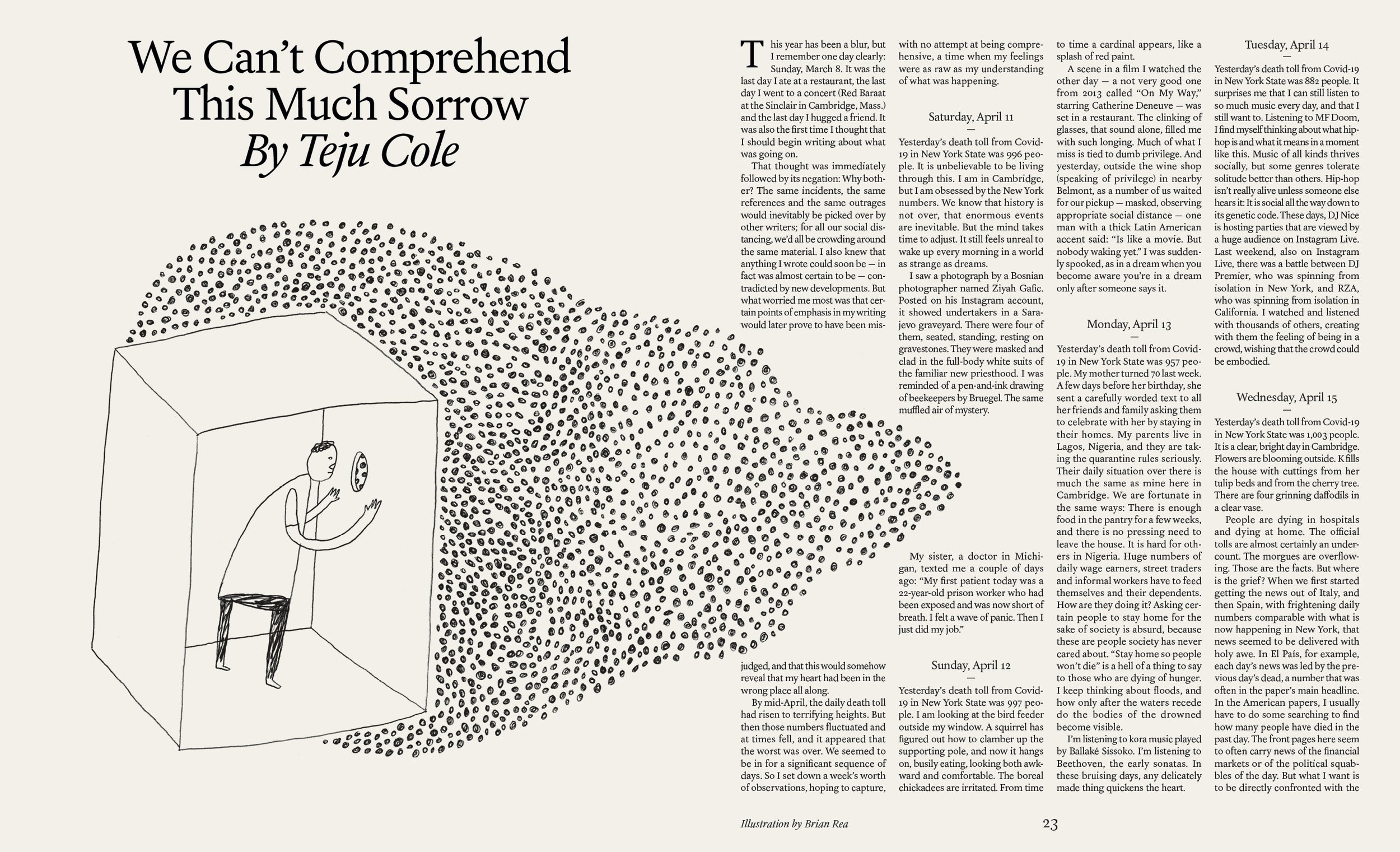


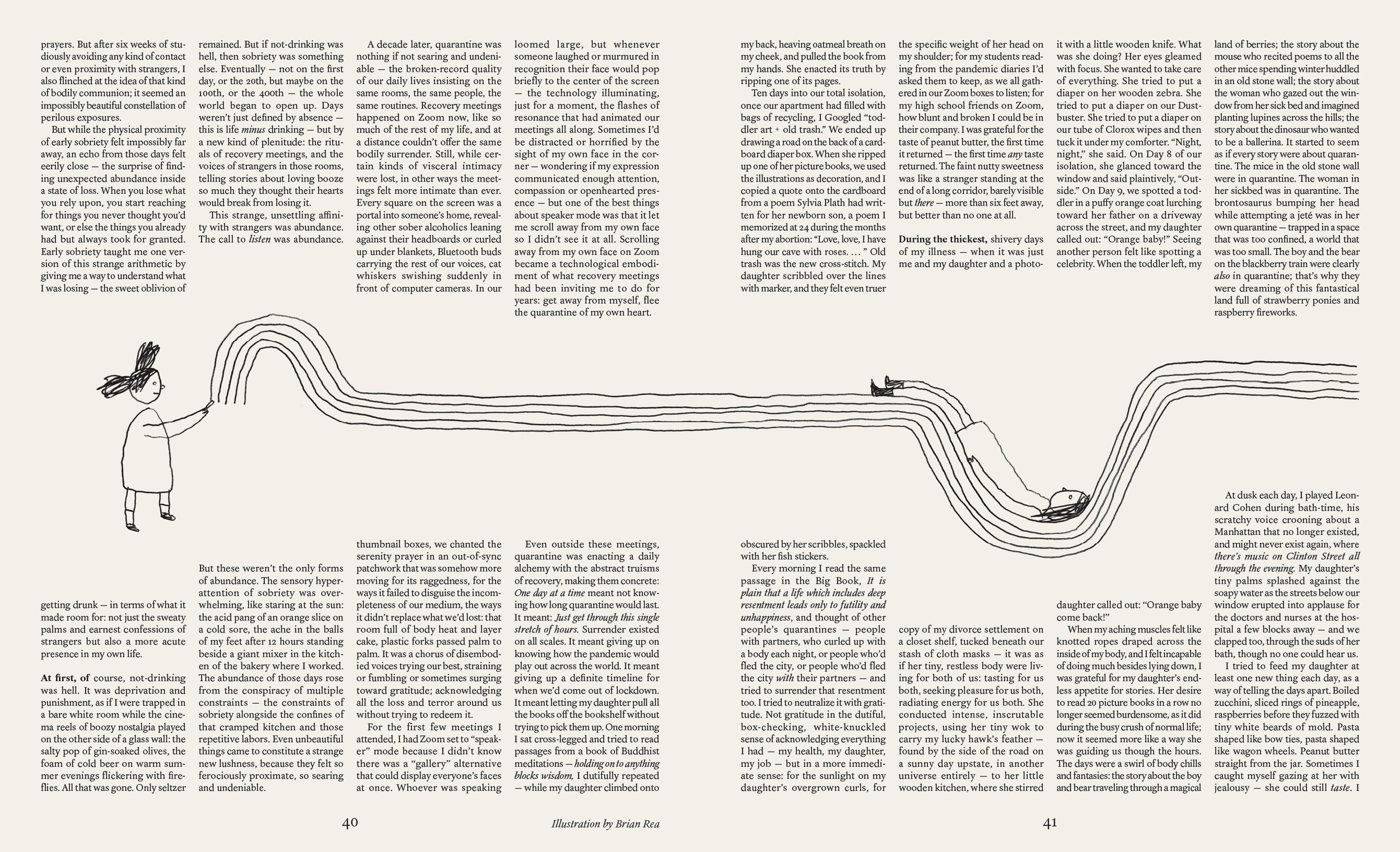


“This is the New York Times. We don’t generally get very far if we try to ask for words to be cut.”
Patrick Mitchell: Did you ever feel a vibe of competition? I mean, you wouldn’t have then, but maybe looking back now, do you feel like you were competing with her? Or that she was feeling competitive with you and your success?
Gail Bichler: No, no. Definitely not. We had other issues, but that was not one of them. And I mean, to be honest, because we didn’t have a great relationship at the point that I did have a lot of success that she could see. We were estranged, pretty much.
Patrick Mitchell: But she knows?
Gail Bichler: Yeah. Yes. I had some contact with her. And I know she was really proud—I think she was just proud of it. But I think that it made her happy that I went into some kind of a creative field.
Patrick Mitchell: Fourteen. That’s a tough age to go through that. Did creativity kind of help you through the rough times there?
Gail Bichler: Yeah, definitely. I mean, I wasn’t making anything that was particularly expressive. I think at that time, one of the things I was really interested in was like cutting magazine pictures in half and then drawing the other half, drawing the side that I removed. I was interested in photorealistic drawing. That’s not so expressive, but it was very engrossing and it was a kind of escape for me. It was something that I did a lot and helped me to go to another place.
Karen Frank: And I read that you received a lot of positive feedback and attention for the art that you were making in high school. That must have helped a little bit too, huh?
Patrick Mitchell: We’ve talked to a lot of people in these podcasts about that moment where they were sort of the “art kid” in school and it really kind of was a life-changing moment. Were you the art kid ?
Gail Bichler: I was a lot of things in my school. I think one of the things that I did to deal with what I was going through was to become a real achiever. And I think that actually maybe speaks to the work ethic that you mentioned. And really working hard. I think that was a coping mechanism. So I did a lot of things. I did a lot of sports. I was captain of the field hockey team. I did everything that I could to excel really.
Patrick Mitchell: Angry and focused.
Gail Bichler: Yes, exactly. I was definitely angry then. Yeah. And field hockey was an outlet for that.
Patrick Mitchell: So then you went on to college at Michigan and we talked about how it was tough. I mean, it’s just tough when a kid has to work their way through school but you did it and you were in a very tough school. The National Champion Michigan Wolverines, as everyone knows. But so you had to pay for your school by yourself?
Gail Bichler: I did. But I knew that kind of early on. And I started working in restaurants when I was maybe like 15. A lot of people have to pay for school. It’s not really not really that unique, but I think it often limits where you can go.
Patrick Mitchell: Were you an angry and focused waitress?
Gail Bichler: I know I was going to say I was more angry and probably not as focused. I wasn’t the best waitress, but it made me enough money to piece together funds for my education.
Patrick Mitchell: Did you take design classes in college?
Gail Bichler: I did, yeah. What really happened was I think some of the work experience that we’re talking about played into what I decided to do. I was really interested in fine art. I wanted to be a fine artist. But I also did not want to keep waiting tables while I tried to have a fine art career.
Patrick Mitchell: So was there a moment when you just fully leaned-into the idea of a design career over a fine art career? Did that happen in college?
Gail Bichler: No, it definitely did not happen really until I came to the Sunday magazine. I had in the back of my mind that I was going to maybe go back to grad school and be a fine artist. Or maybe use some of the skills that I had gained as a designer and kind of combine that with the fine art that I was doing. And I really entertained that for many years.
And then I think when I got to the Sunday magazine and I really felt like I was immersed in the content and really interested in what I was making, and also able to work with some of the best artists out there—to be able to make things that way as well, I let go of that and decided I actually was a designer. And that it was what I should be doing and what I enjoyed.
Karen Frank: Before you came to New York, right after college, you went to Chicago. And you’ve described your job at Studio Blue, where you worked, as something that was very ambitious, they were pushing really hard to do new and interesting things. What kind of projects did you work on there? And what did you learn about work and about yourself being there?
Gail Bichler: They did mostly book design. But they also did a number of other things like identities, and signage, and brochures, and things like that. A lot of different things. But what I think I meant when I said they were ambitious was really mostly about formal exploration. They were doing a lot of interesting things with typography. And when you make an art book, sometimes it’s just really a backdrop for the artist’s work. Or it can be kind of quiet. That wasn’t generally the kind of art books that they wanted to make.
They were really wanting to make something that had a point of view and had a real design. And for example, the first book that I worked on there—really my first professional project—was a book for the Museum of Contemporary Art. And it was a kind of important book because it was defining the history of art in Chicago for the past 60 years. And so it was controversial.
And when it was published, people were kind of looking at it to see who was in it and who was out, because it was going to define the history in a certain way. And it got reviewed in a national art magazine. And they really didn’t like it. One of the quotes that they had was that “the designers should have their eyes poked out with blunt thumbs”—which is really extreme.
Patrick Mitchell: “Blunt thumbs?!”
Gail Bichler: Yes. And I want to be clear and say first of all, I didn’t design the book. Really it was my boss, Cheryl Towler Weese, that designed it and came up with the kind of structure for it and the look for it. And I executed on that. But it was a really nice book and it actually won some awards.
Patrick Mitchell: Does she still have her eyes?
Gail Bichler: As far as I know, she does. But the interesting thing about it, I guess, was that it was a little bit traumatizing for me. It being so early in my career, that felt kind of devastating. But Cheryl and Kathy, who was the other partner there, weren’t devastated by it.
They were just like, “People are talking about it. It’s not bad.” They didn’t really seem to care. And that was kind of a lesson for me. That was just an example of, If you make something nobody hates, nobody loves it either.


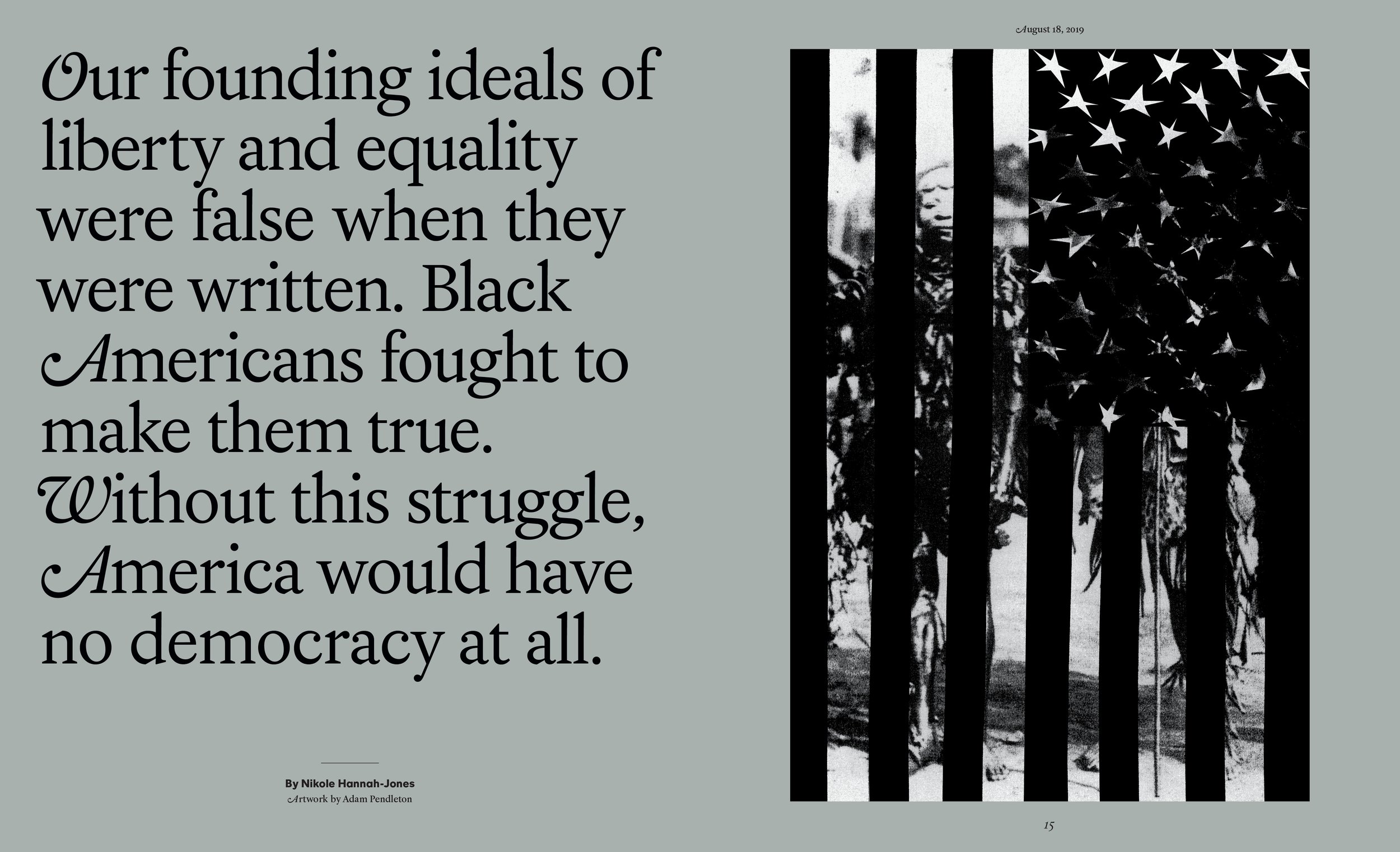
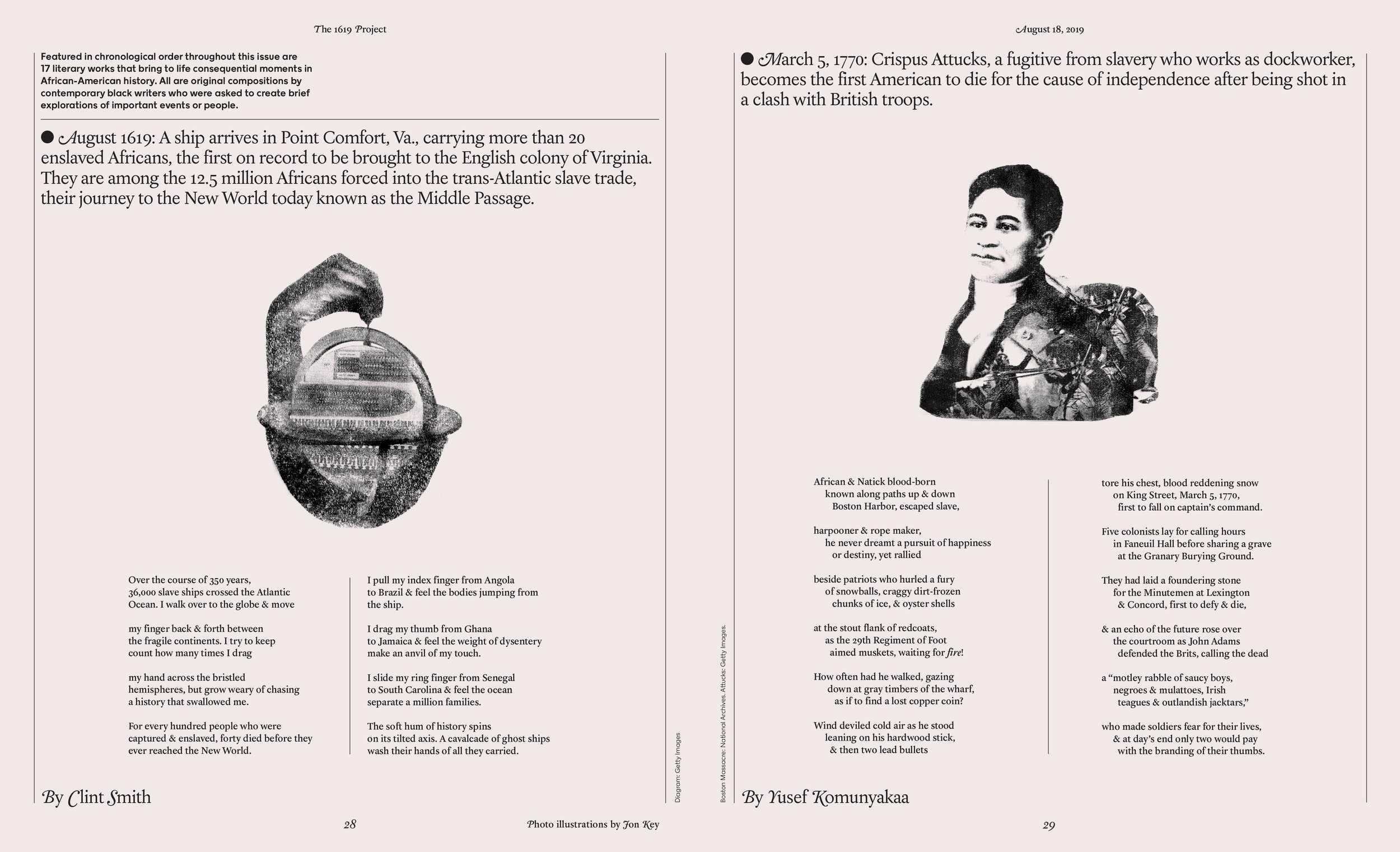

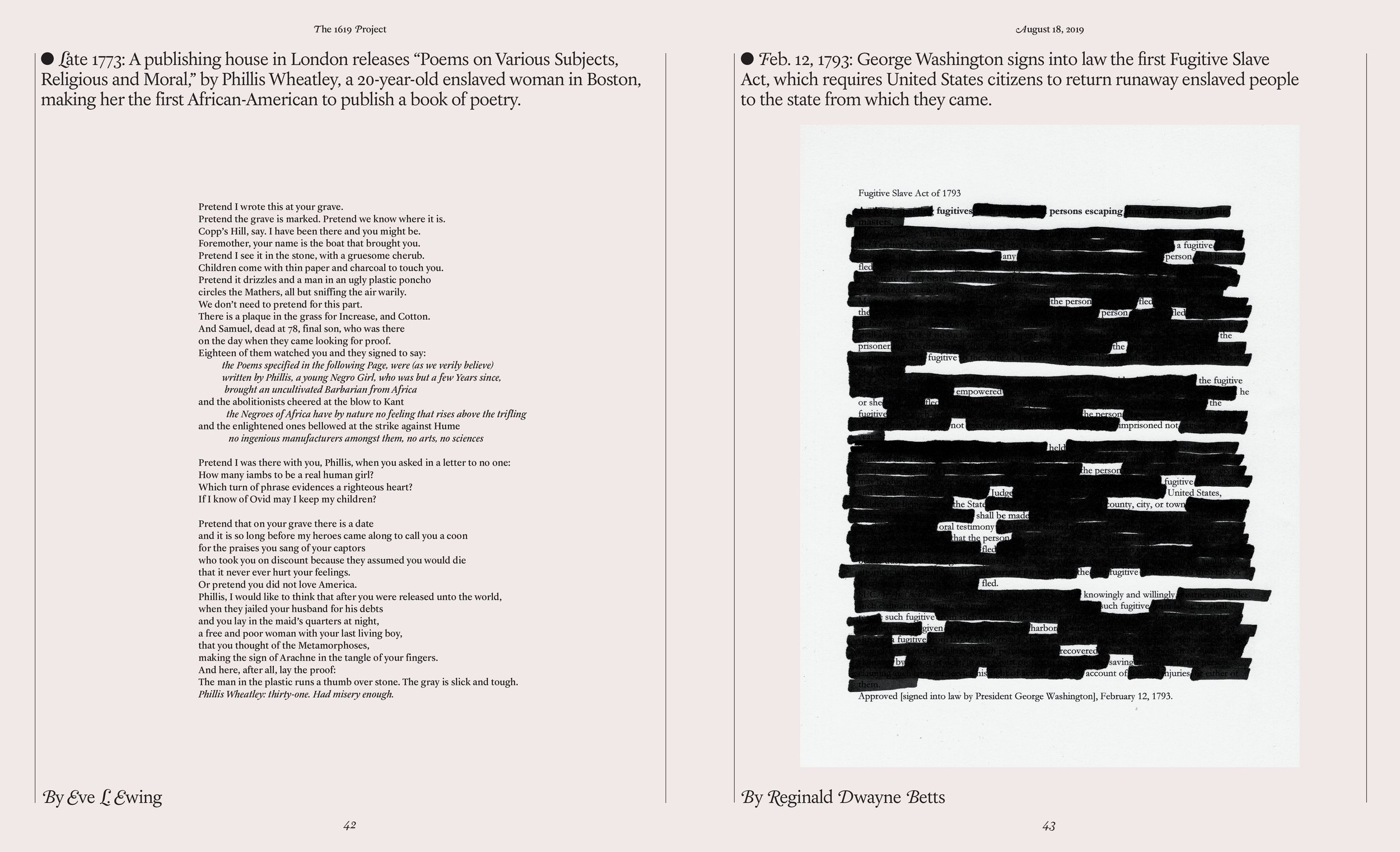
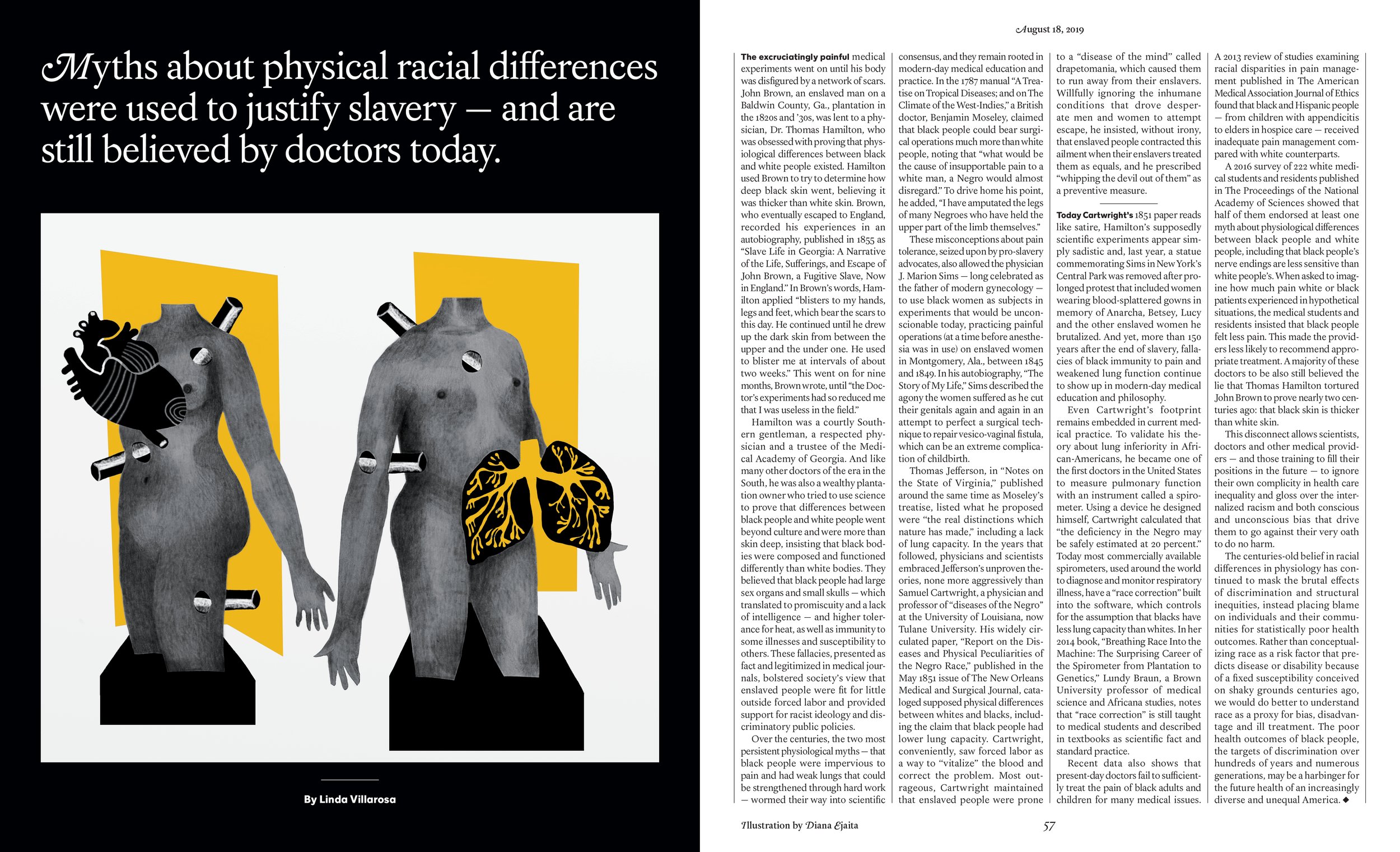

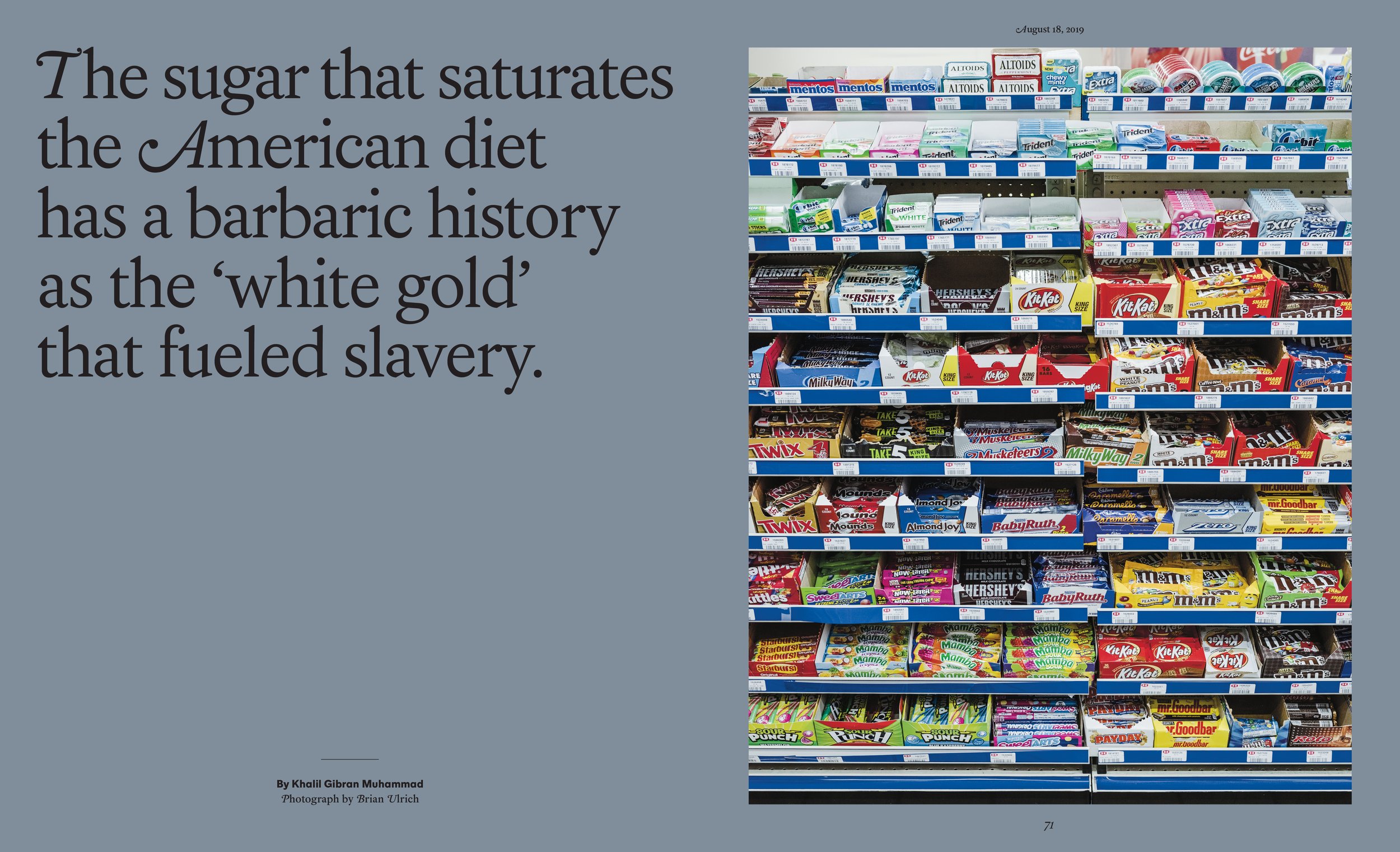
“At points I think being able to have a vision and maybe not be the executor is actually really satisfying. And is, in a way, having a role in making it.”
Patrick Mitchell: That’s true. So after Chicago, you moved to Minneapolis, which was a real design city with a lot of great, more advertising and marketing, but some big name firms. But you opened Gail Bichler Design when you got there, where you worked alone. And you’ve said earlier that you didn’t like working alone. You’ve said running your own business wasn’t right for you and I’m sure working alone was part of it. But something made you do it. And I wonder if you have this latent entrepreneurial gene which can apply itself even when you’re working for someone else. I think the people who are the best in the magazine business have that entrepreneurial spirit. They just take the initiative. They create things on their own. They don’t wait to be told. So talk a little bit about that—why it wasn’t right but why you did it anyway.
Gail Bichler: I did it because I wanted to do a certain kind of work. And when I moved to Minneapolis I was really interested in maybe trying to get a job at the Walker Art Center—they weren’t hiring—or maybe working for a publisher in some form. I just didn’t find the job that I wanted. So I decided to just do it myself. And that’s kind of typical for me. I think I just want to work on things that I’m really interested in and care about. I think some people are good at maybe kind of creating a narrative around something that isn’t as interesting. And I think I’m not as good at that.
Patrick Mitchell: Did you get a space and do the whole thing?
Gail Bichler: No. I’m going to backpedal on calling it a “business” because it was really just me working at home—sometimes taking breaks to go to the gym—but doing my own projects. And I don’t think I made great work while I did that because I just missed the energy of running something by another person, talking to somebody else about it. I needed a lot of—I needed interaction, really.
Karen Frank: From Minneapolis you made the move to New York in 2004. And we know you ended up at T with Janet, but were there any other print publications in New York that you worked with before you landed that freelance position?
Gail Bichler: No, that was actually my first job in New York. Pretty good first job.
Patrick Mitchell: That’s a great start. Wow! Hitting the jackpot, dude.
Gail Bichler: Very lucky.
Patrick Mitchell: I noticed in our first conversation about doing this podcast, that you use the word “make” where a lot of people use the word design. And I really loved it. I didn’t tell you that at the time, but I thought about it after and you’ve used it a couple of times here already. That’s got to be intentional. Can you talk a little bit about why you think that way? Is that the fine artist in you?
Gail Bichler: I think it might be. When I think about designing, I think about making things and putting them out into the world. And it isn’t really intentional. I think it’s just how I think about it.
Patrick Mitchell: ‘Making’ became such a big buzzword over the last five-to-10 years. But I have never allowed myself to think that way. It’s just, you go to work cranking out magazines. It’s nice that you actually apply that word because I think it lifts the whole profession. So thank you.
Gail Bichler: Yeah. Thank you for pointing it out for me because I didn’t even really realize I was doing that.
Karen Frank: You mentioned earlier that you don’t have as much hands-on with the design on a weekly basis. You work on the covers. How do you feel about that? Are you still able to satisfy that need to make without being hands on the literal design?
Gail Bichler: Yeah. I definitely get a lot of enjoyment from working with other people on their designs and giving input. And sometimes when I have made something—when you stop designing as much, you know, sometimes when I do go to make something, a lot of times I get a little frustrated that I can’t make it as fast as somebody else. Or I sometimes think that somebody else on my team, maybe, would be doing it better depending on what it is.
And at points I think being able to have a vision and maybe not be the executor is actually really satisfying. And is, in a way, having a role in making it. That said, I still do love to occasionally just do it myself. I don’t want to let go of that. I don’t think there’s a substitute for actually just making something.
Patrick Mitchell: Speaking of Janet Froelich—Episode 7 for those listening at home—who was a predecessor of yours at the Times, you both had a very similar start to your career. She started out as a fine artist. And kind of slid backwards into magazines. Did you guys ever connect over that?
Gail Bichler: No, we actually didn’t.
Patrick Mitchell: Maybe you should.
Gail Bichler: I know, maybe we should. It’s funny. It’s something that I know about Kathy Ryan as well. She started out in fine art and also had a kind of similar reaction of wanting to be on a team and moving towards the magazine.
Patrick Mitchell: It shows in the work too. This is your fine art. I have noticed for, I guess, decades now that the Times has this—I assume Janet started this—but this system of having like an atelier. I just remember seeing the SPD annuals come out year after year— full of The New York Times Magazine—and you’d get down to the credits and you’d see the names of designers. You had full-on former art directors, combined with superstar upstarts right out of college, and people drifting in and out from other professions. I want to read off a list. These are the names of people who have not been the creative director of The New York Times Magazine, but have done great work there with you, with Janet, with Rem: Matt Willey, Deb Bishop, Michele Outland, Cathy Gilmore-Barnes, Rem Duplessis, Anton—help me out—
Gail Bichler: ...Ioukhnovets..
Patrick Mitchell: …Caleb Bennett, Ben Grandgenett, Chris Cristiano, Erin Jang, Frank Augugliaro, Claudia de Almeida, Matt Curtis, Annie Jen, Najeebah Al-Ghadban, Robin Rosenthal, Emily Crawford, Joel Cuyler, Chloe Scheffe, Jason Sfetko, Leo Jung—who have I left out—about 30 other people?
Gail Bichler: Probably, yeah.
Patrick Mitchell: And, on the one hand, an insecure person might find themselves threatened. The job you have is a very desirable job. And you’ve, basically, potentially invited in a bunch of people who would love to take your place. However, that doesn’t seem to happen. And I would say that, at a certain point, your self-confidence and security overrides that. But can you just talk about the breadth and the width of the talent that you’ve, even just that you, have brought in and collaborated with. It’s amazing. It happens nowhere else.
Gail Bichler: Yeah. I think that my goal has been to work with the most talented people that I can find, and also really good people that I want to work with that I like to work with. And so I’ve just pursued those people and because of the platform, because it’s The New York Times, I’m able to invite some more experienced people in and to work with them because of what it is.
And so I’ve done that wherever I could. And I’ve also understood their experience and, tried to, be involved with what they make accordingly. For example Deb Bishop, I brought her in and she’s really just independent. We interact. She shows me things that she makes. I’m amazed by them. I give input she could take or leave. She’s amazing.
Matt also was somebody who had a huge amount of experience and a name, and was just somebody whose work I really admired and wanted to work with and felt really lucky to be able to bring him here from London.
You mentioned also really talented upstarts. And that’s also something that I’ve tried to do was to spot talent, even in its, like, kind of raw form.
“I am always inspired by the stuff that’s happening around me. My team, the work that they make, and also just things that are happening at the Times as well,” says Bichler picture (far right) with The New York Times Magazine art and photo departments. (Photograph by Sabrina Giacomaggio)
Patrick Mitchell: Who’s in your art department now?
Gail Bichler: So it’s Ben Grandgenett, who’s our design director. We have a digital art director, Kate LaRue. Two deputy art directors, Annie Jen and Rachel Willey. A senior designer, Claudia Rubin. Victoria Escobar is our designer. And our developer is Jacky Myint. And they're just a really Incredibly talented, hardworking group of people.
Patrick Mitchell: Have any of them worked for other magazines?
Gail Bichler: Yeah, some of them definitely have. Annie Jen was actually an intern at the magazine a long time ago, and has worked for a number of other magazines, including Wired. And, she worked with Leo at The California Sunday Magazine. She’s got a lot of magazine experience. And also Kate LaRue has worked at a number of publications including National Geographic and 538.
So there’s definitely some magazine experience there. And then there’s people that come from other places. And that’s something that is intentional as well, just in terms of spotting. As you point out, it’s kind of hard to find a lot of really talented people at the moment that have been at other magazines because there’s just not as many people out there.
Patrick Mitchell: I would imagine, thanks to what you’ve achieved there, it’s become a real aspirational place to go to work. And speaking of that, you win every award every year, for the last ten years or so. You’ve had a great run of success there. But in talking to you and in talking to Jake you both mentioned that it’s hard to wrap your head around this much success. And I want to tell you—I mean, I can’t relate to the amount of success that you have had, but I came out of the womb chasing that National Magazine Award. And actually was lucky enough to win it.
Gail Bichler: Yeah, I was going to say, I feel like you’ve had your share of successes.
Patrick Mitchell: But I remember—there’s this line in The Firm, they’re at a dog racetrack and this guy says, “Does the dog ever get the bone?” And they say, “Yeah, when he does, he never races again.” And for about a year after that, I was like, “Okay, now what?” But, you know, to have a dream for a long time and achieve it—and it feels like you’ve certainly reached a level of success—that might be hard to wrap your head around. Can you talk a little bit about how that feels?
Gail Bichler: Yes. Something stuck with me that I just wanted to go back and say, which is, first of all, the thing that you said at the beginning of this, which is a really nice compliment about what I’ve done at the magazine and that makes it aspirational, but I really just feel like I come on the heels of so many really amazing people. It’s been aspirational for a long time.
But back to the successes. It is hard to wrap your head around that. I think the weekly nature of a magazine, also, it’s hard to take a moment and take a breath. You’re just kind of onto the next thing. I think also a lot of people are like this, but you tend to end up feeling like you’re only as good as the last thing that you did. Or you have to keep proving yourself.
And in some ways that’s something that drives people. And probably drives me. But I have really worked pretty hard more recently to try and stop and absorb some of that success. And I think it’s really important because success doesn’t last forever. And I want to feel it and I think it’s particularly important as a leader of a group also to stop and absorb that and acknowledge it and celebrate it.
Patrick Mitchell: Yeah. Feel it and share it. You should feel it. You’re really good. Congratulations.
Karen Frank: Gail, I’m quoting you here. You said, “If you’re making something that’s consistently pretty good, but you don’t have anything great, that means you’re not pushing yourself or taking enough risks. You’re just making sure that nothing fails.” That's a lot of pressure that you put on yourself on a regular basis! And I’m just wondering, what is the secret to your success? What’s your release-valve for all the pressure that you put on yourself?
Gail Bichler: Yeah. I just want to put a little context to that, which is that when you make a weekly magazine and you’re doing as many things as we are, sometimes it just feels tempting to go for an easy solution. And I think if you have design skills, you can pretty much make anything look pretty good.
And so for me, sometimes it’s about stopping and thinking about whether or not the thing that you’re doing excites you. Or whether or not there’s a better solution and creating those opportunities. And so that’s what I mean by that. But as far as what I do to let off steam, I have a vice of watching TV. I love escapist TV.
Patrick Mitchell: Is that what you want to do after The New York Times?
Gail Bichler: Yeah. Yeah! No, I also exercise. And I really love spending time with friends and family. And those relationships are important.
Karen Frank: Do you have any creative outlets? Do you like cooking? Do you still do any artwork? Anything like that?
Gail Bichler: No. No, I don’t do that. My plate is pretty full and I do feel creatively fulfilled. Maybe at some point I will take up something else that is artistic. I hope that I will. But for now, no.
Patrick Mitchell: Earlier you walked us through your work day. Can you talk about what happens before and after work on a typical day? You’re a powerful woman with a very high-profile job. You’ve got a teen and a spouse at home. How do you and Paul juggle it all?
Gail Bichler: It’s become easier over the years. My son is now 15. There was a point where when Nate was young, Paul, my husband, was a creative director in advertising and he was traveling a lot. He made some Super Bowl commercials. His job was very high pressure. And he worked a ton too. And I was also in the job I’m at now. And that was pretty tough.
I think at that point I had kind of decided that I was just going to have this job and my family. And I was going to really have to try to be present with the time that I had with my son. And I really didn’t do a lot else during that time, but with the understanding that it would eventually be different and that I would have time for other things.
And Paul and I would often have to negotiate about who’s going to come home or who’s going to do certain things. But Nate’s now older. He doesn’t want to spend as much time with me. And actually Paul decided to make a change and left his job and is now just doing some consulting—and a lot of woodwork around the house here. And cooking and that kind of thing. So at this moment, it’s actually quite a bit easier for me.

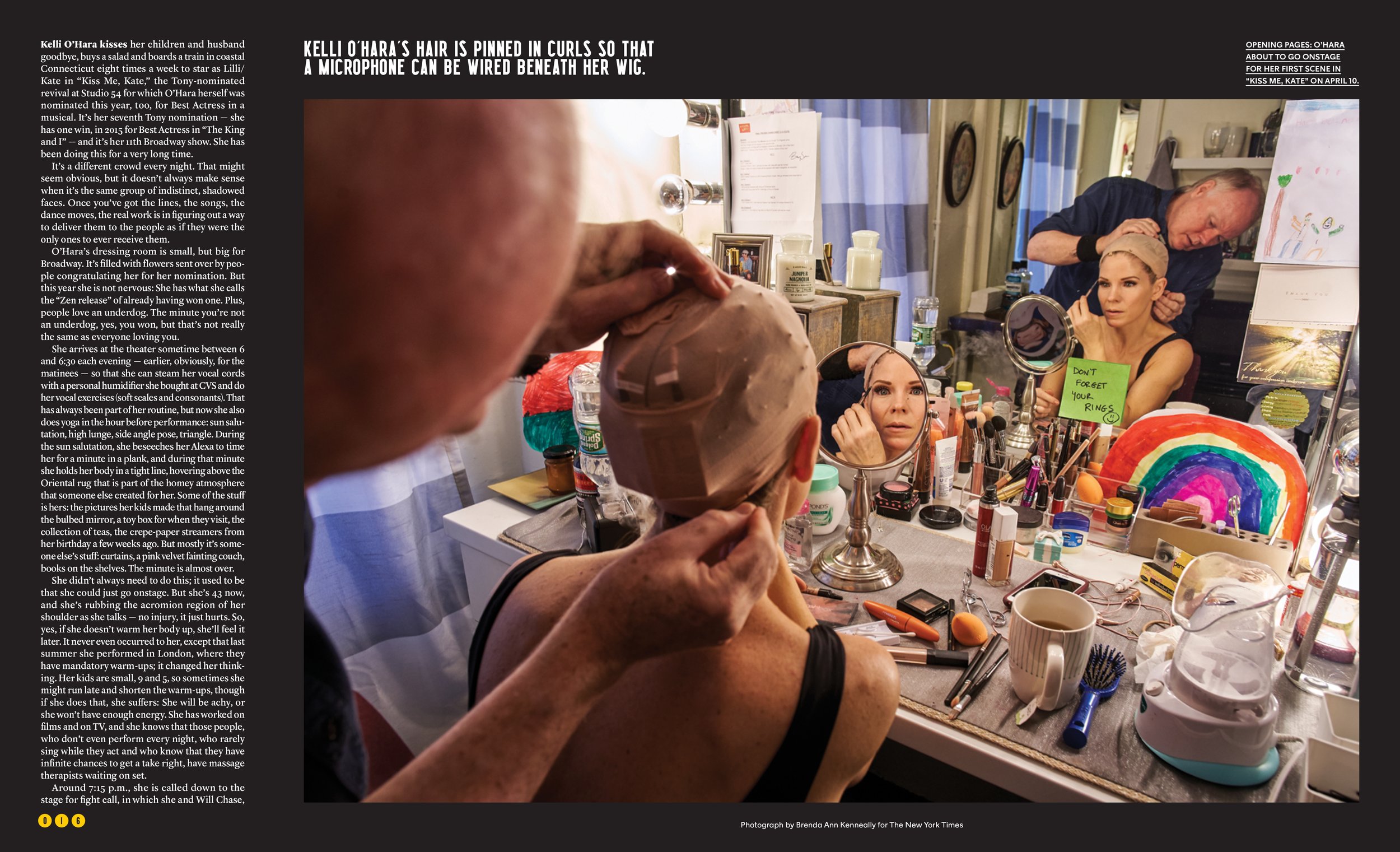





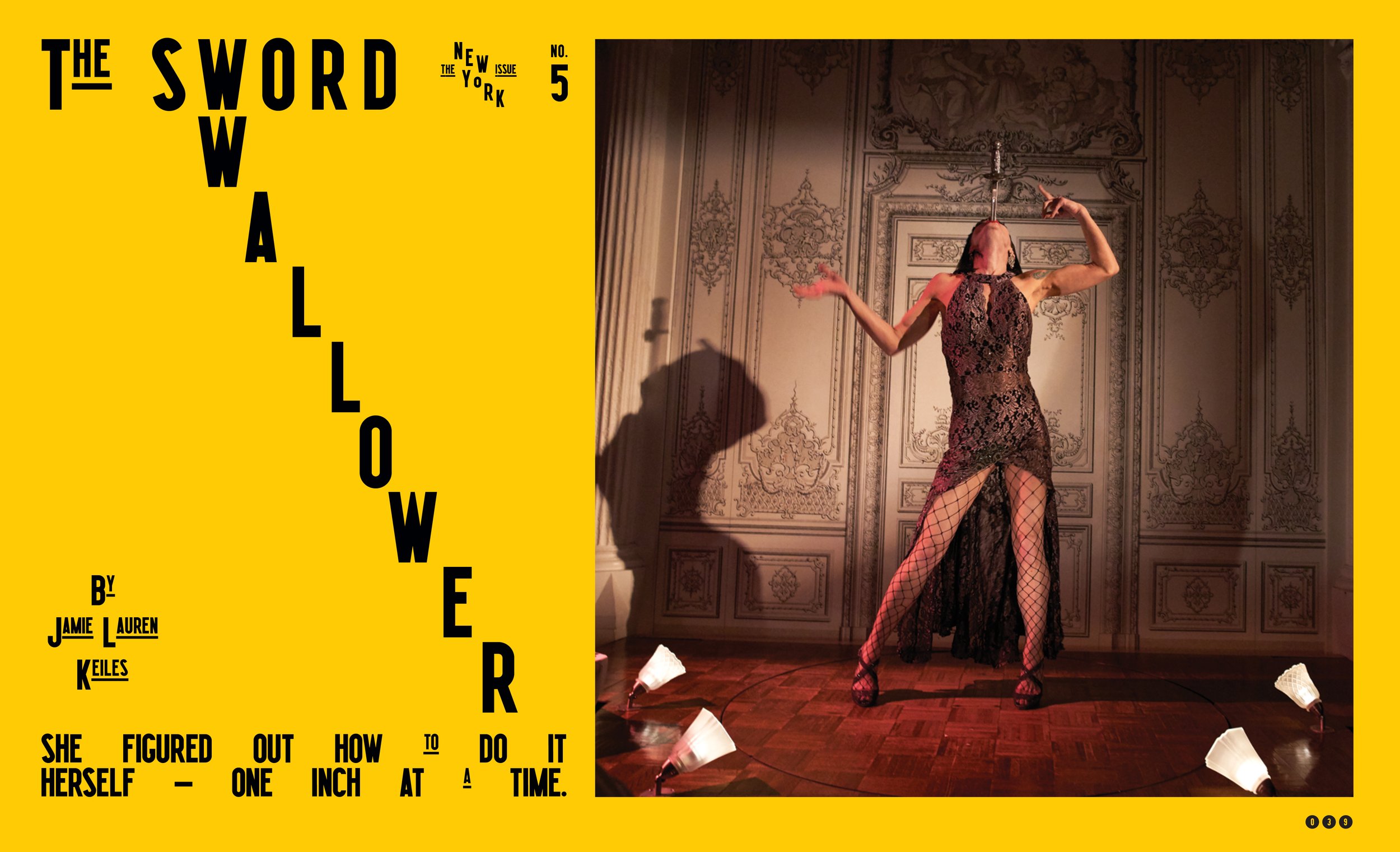
Karen Frank: How did you and Paul meet?
Gail Bichler: We met on the first day of school at the University of Michigan.
Karen Frank: Wow.
Gail Bichler: Yes.
Patrick Mitchell: Oh my God. Wow.
Karen Frank: Orientation?
Gail Bichler: No. He was in my foundation’s art class. And we didn’t start dating until the end of school. But you know, we did a lot of work together.
Patrick Mitchell: The end of that year or the end of four years?
Gail Bichler: No, about partway through my third year, we started dating. But we worked together a lot and were friends before that. Yeah, I always feel a little ridiculous that I’ve married this person that I met on the first day of college. But we’ve grown together. There have been points—there was a point where we did split up and kind of date other people. But we ultimately ended up together and I’m very happy about that.
Patrick Mitchell: You exhaust me—this research and just hearing about the volume of work that you have to do. And so as my gift to you, I’m going to spare you The Print Is Dead Billion-Dollar Question that we typically ask at the end of an interview, and ask you the $5,000 question. If you were handed 5k in cash and childcare was not an issue, what kind of night would you plan for you and Paul? And we will need receipts.
Gail Bichler: I have no idea.
Patrick Mitchell: Let me put a caveat on that. You have to go out. No TV.
Gail Bichler: Yeah. Okay.
Patrick Mitchell: We’re not paying you $5,000 to sit and watch TV.
Gail Bichler: That’s too bad. I think that I would probably try and make that a vacation and add in my own money and take some real time off and go to Japan.
Patrick Mitchell: Nice! Have you been there?
Gail Bichler: No, I’ve never been there. I’ve always really wanted to go. And I wanted to go for a milestone birthday.
Patrick Mitchell: Do you have one coming up?
Gail Bichler: I already had it. Yeah, my 50th. But it was during the pandemic, so we couldn’t go. But I would love to do that if I had some extra cash.
Patrick Mitchell: All right. So I always like to ask people this question because the answers are so interesting and they make you go back and do research, but I’d like to know what you think, are the five best-executed magazines of all time? Five magazines, other than your own, that were, or are, really clicking on all cylinders: design, editing, packaging, voice, headlines, branding, typography, photography, and illustration. I think a lot of people would like to know what’s inspired you over the years.
Gail Bichler: Yes, we discussed this a little bit before talking so that I would have a little time to think about this. And I did think about it. But I found it really hard, just thinking back through all of history. And I don’t think I actually have a take that’s interesting that you haven’t heard from somebody else.
And I tend to be inspired by things in a slightly more fragmented and, maybe, a little more random way and often things that are happening around me. And so I just wanted to give you a somewhat random but magazine related list of things that inspire me.
Patrick Mitchell: Sure. Okay.
Gail Bichler: Okay. So after saying that I’m often more inspired by things that are happening directly around me, I do have two historical magazines I want to mention that I find really inspiring. And, one is Colors. And one is Twen. These are classics.
I think when you asked about things that are firing on all cylinders I love Twen. It’s in German. So I really don’t understand the relationship of the language to the visuals, but I love it. And I think it’s beautiful.
I really like Michele Outland’s work on Gather. I just loved what she did with that in terms of her take on food photography and just—
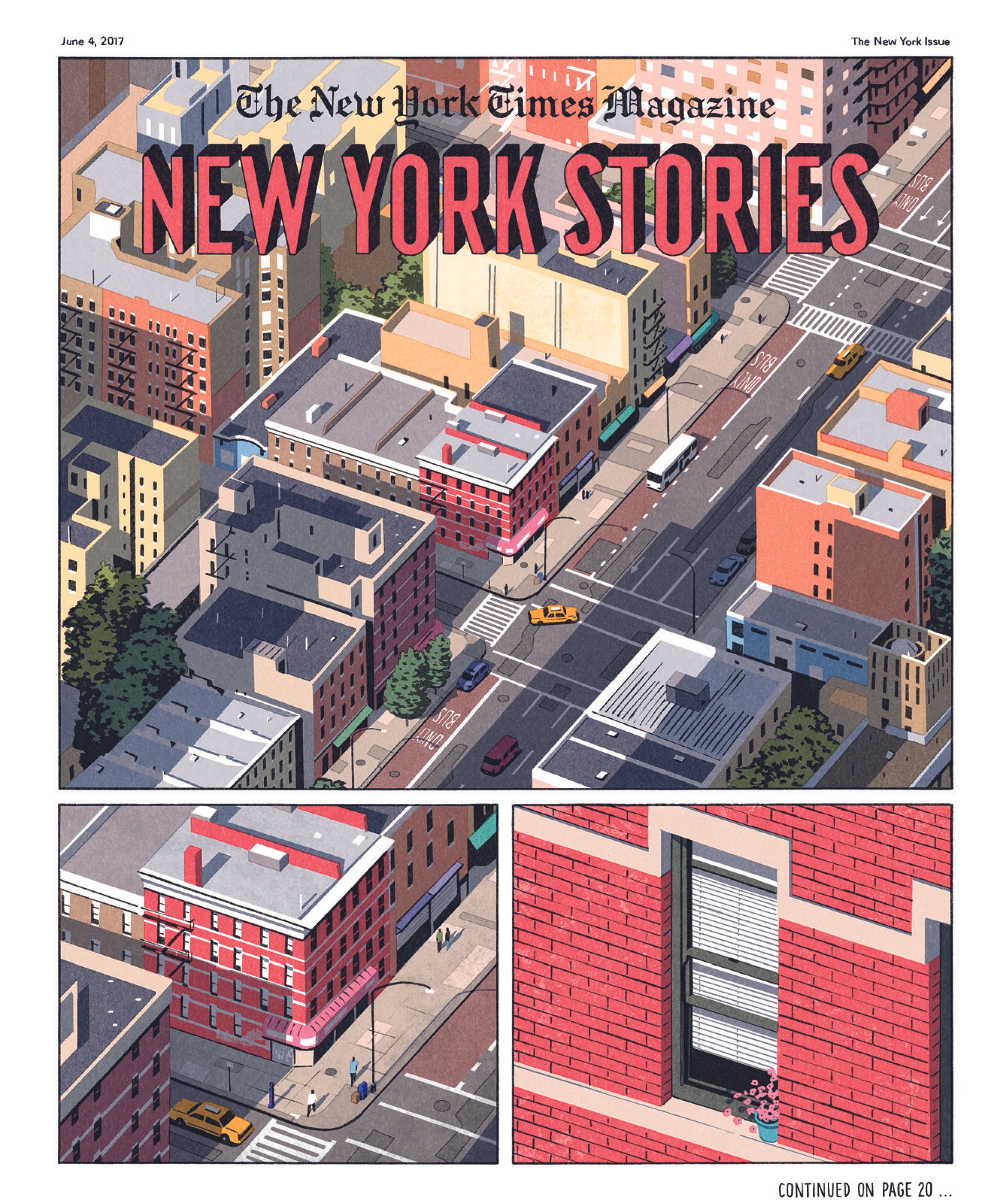
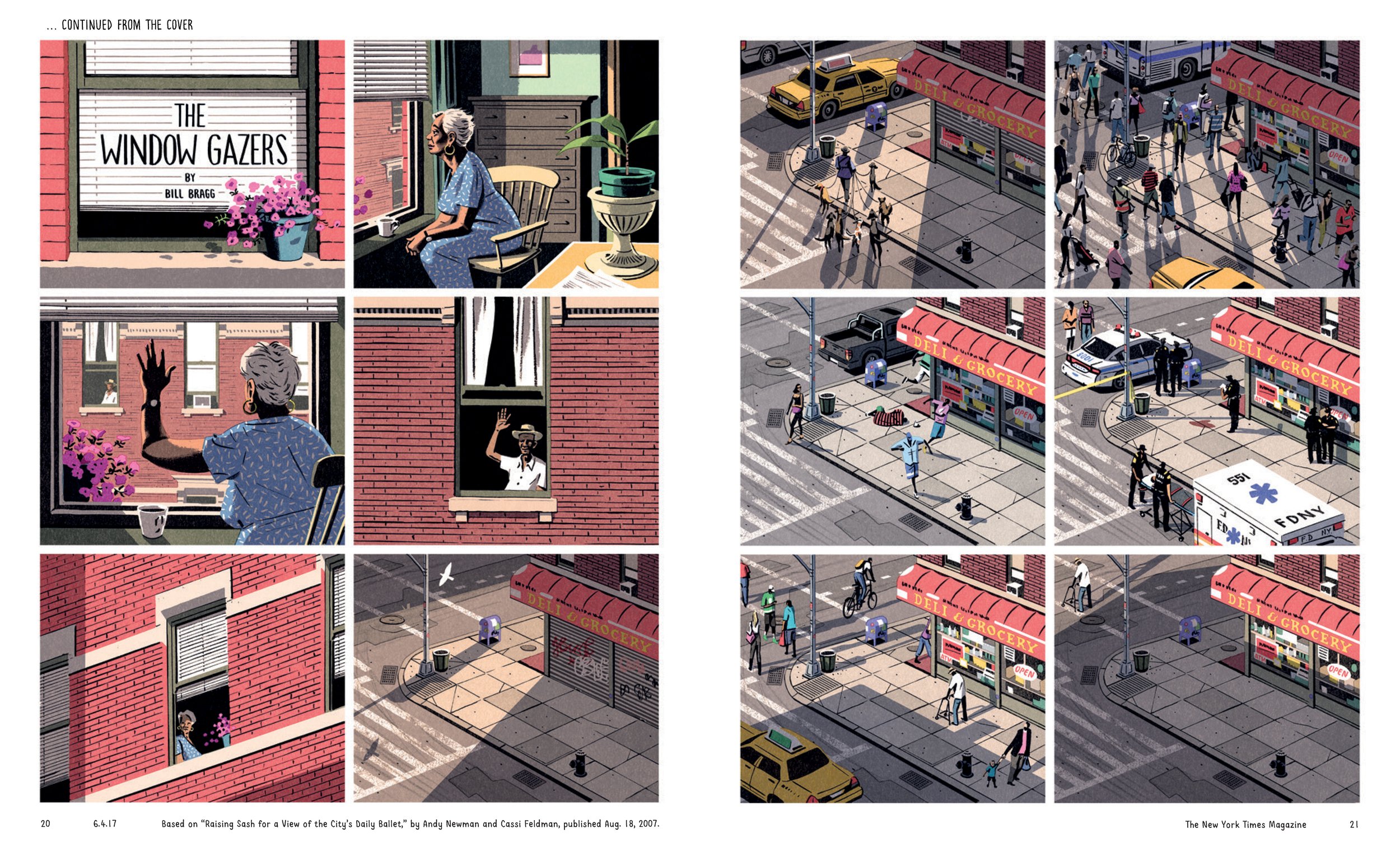
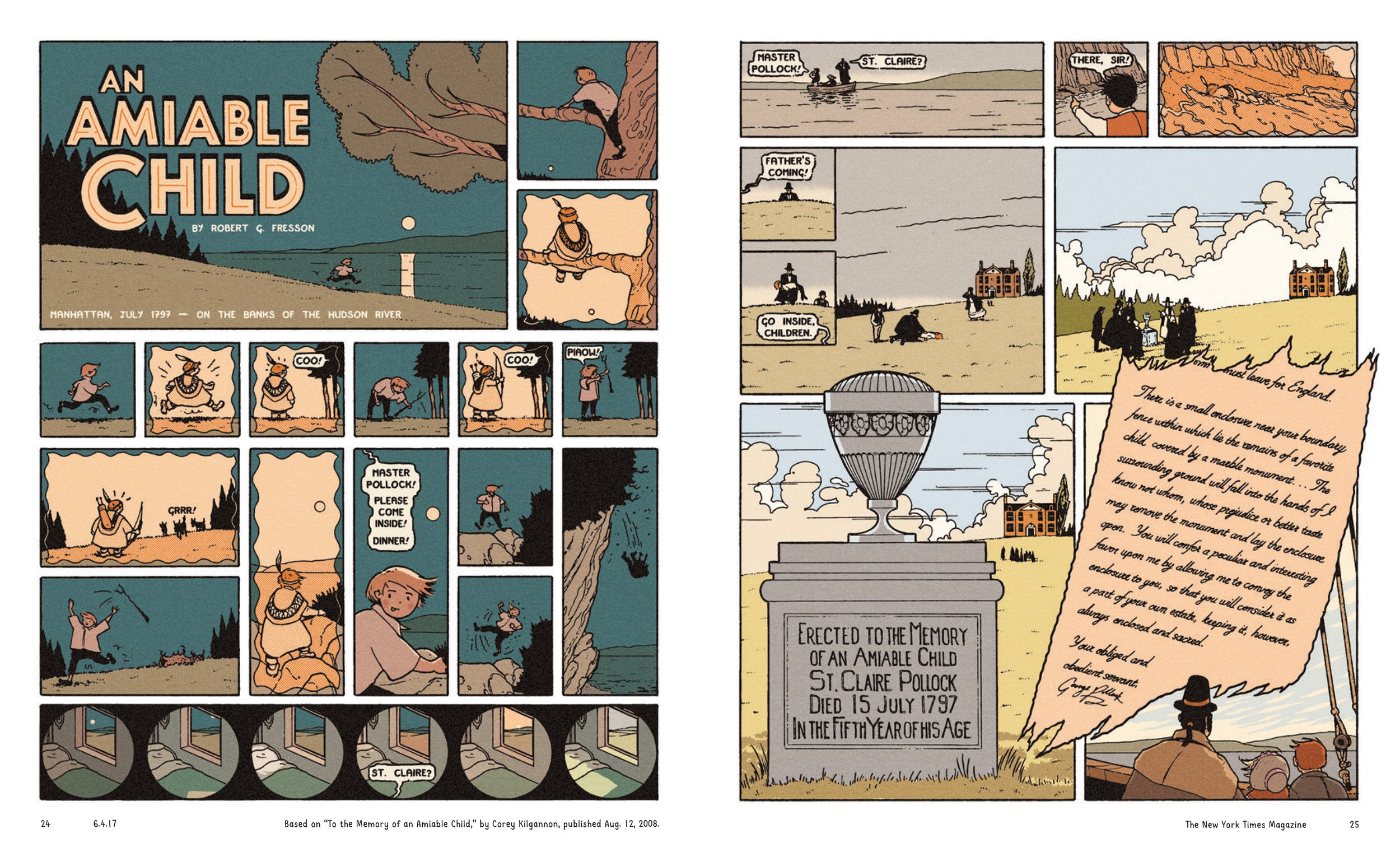

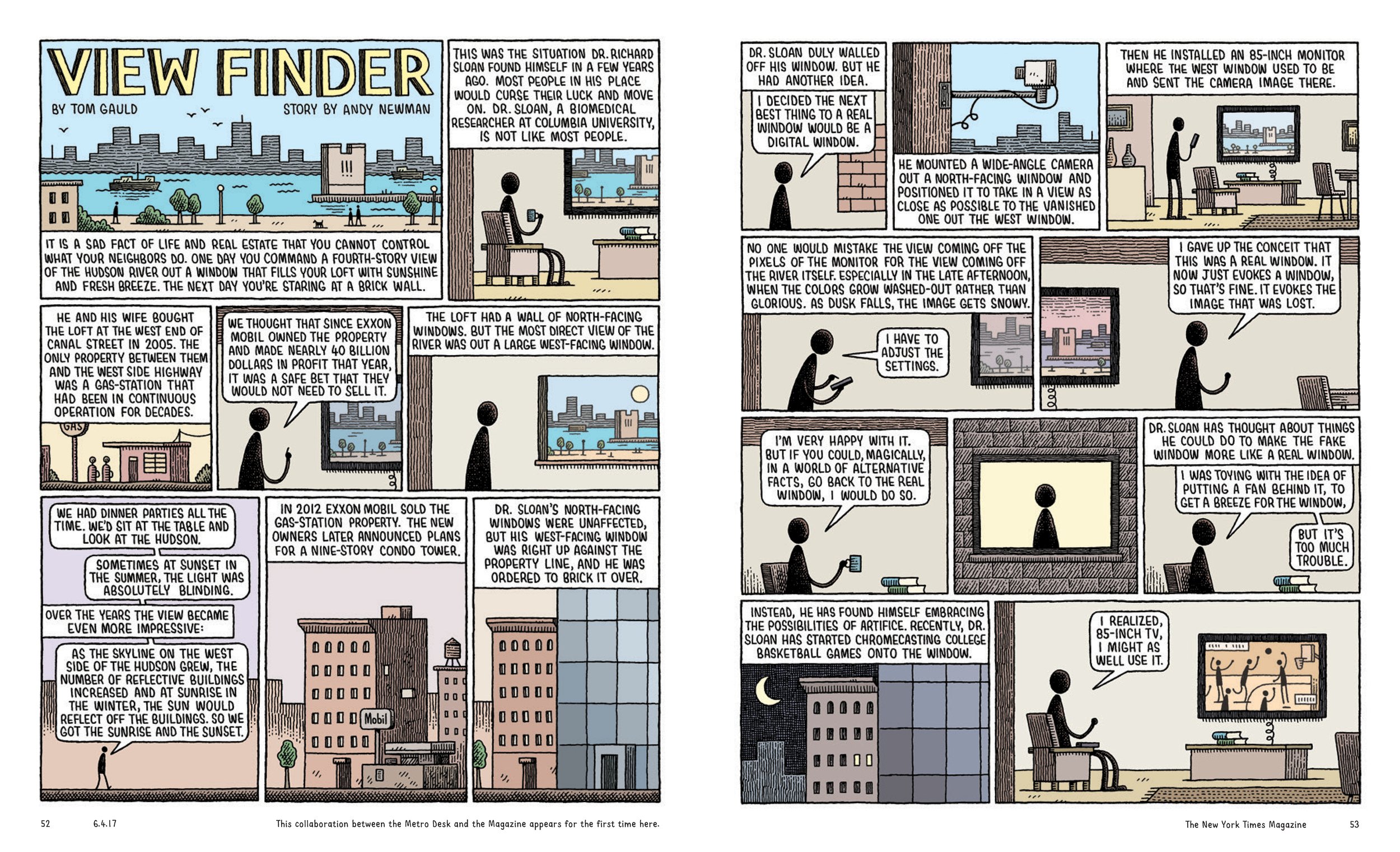
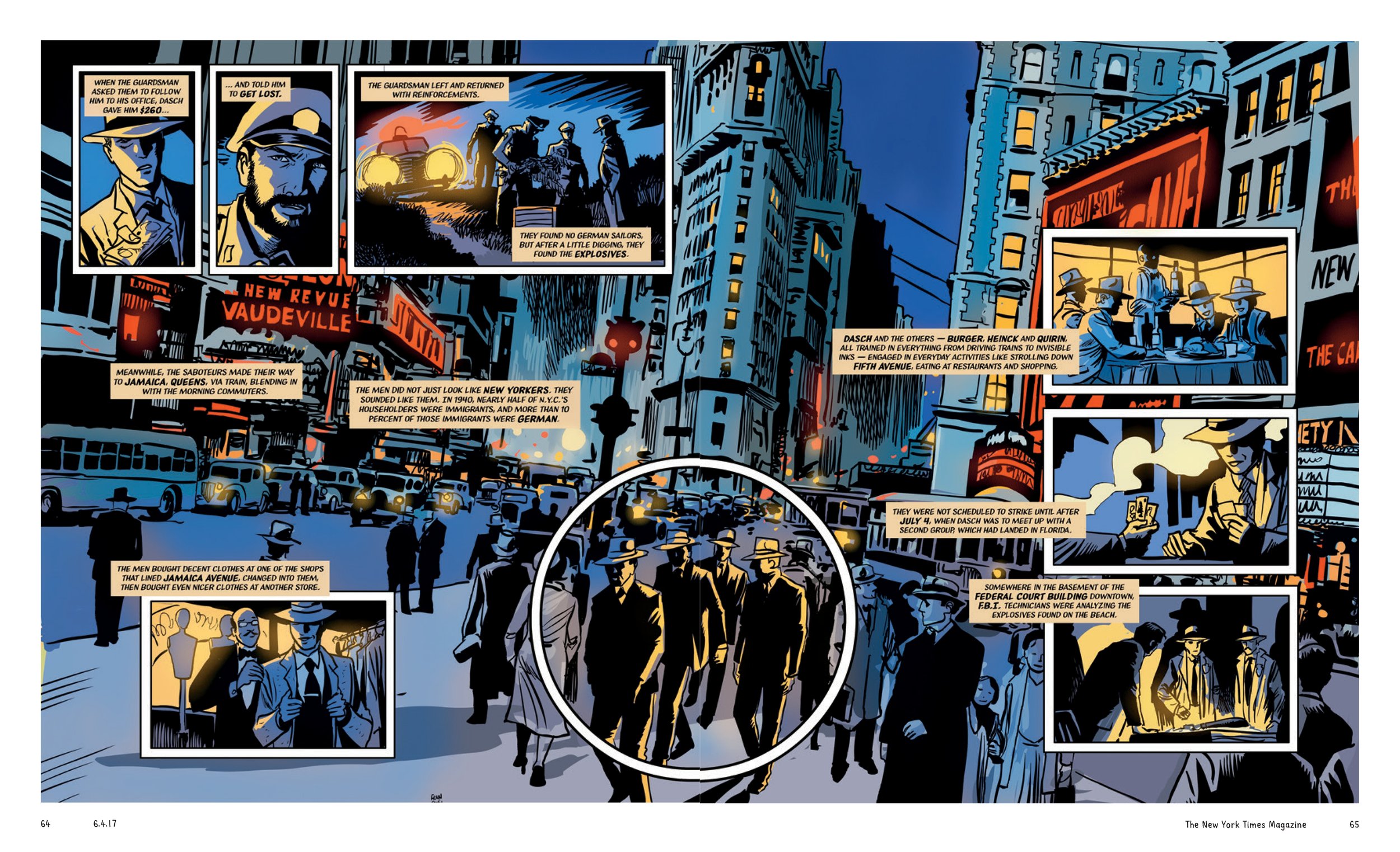
Patrick Mitchell: Episode 3 if you’re listening at home.
Gail Bichler: ...and making art out of food photography. And it was incredibly influential in the industry.
I love New York magazine for how they’re able to really be on the pulse of things and capture things and encapsulate things that people are thinking about in a really interesting way.
Port has done some interesting experimentation with their logo. Matt Willey did a really interesting thing with their identity that I loved, which was kind of making it modular and moving it around and making it a flexible system. And I just thought that was great.
And then more recently, I just saw that Matt Curtis, another person that I’ve worked with, did an issue of Port where he made this really beautiful, like awkwardly-drawn logo which I was very interested in. Not sure if that is repeatable or part of a system, but I thought it was beautiful. And I thought it was interesting that they were experimenting with their logo in that way.
And then I had recently gone and seen the Es Devlin retrospective at the Cooper Hewitt, which I thought was amazing, and I’m going to go back and take another look at it. But you know, I really am always inspired by the stuff that’s happening around me. My team, the work that they make, and also just things that are happening at the Times as well.
Like the things that Deb makes. She approaches that in such an interesting way with humor and sophistication for that audience. And you can tell how much fun she’s having. And also in terms of digital inspiration, a lot of the things that our newsroom makes are really interesting, and new formats, and really pushing the boundaries of what you can do in that medium. And I just feel lucky to be surrounded by things that are that inspiring and people with that much talent.
The New York Times Magazine braintrust: Editor-in-chief Jake Silverstein, Bichler, and the recently-retired director of photography, Kathy Ryan. (Photograph by David LaSpina)
For more on Gail Bichler, visit The New York Times Magazine, follow her on Instagram @gailbichler, or check out pretty much any design awards annual, past or present.
More from Print Is Dead (Long Live Print!)





